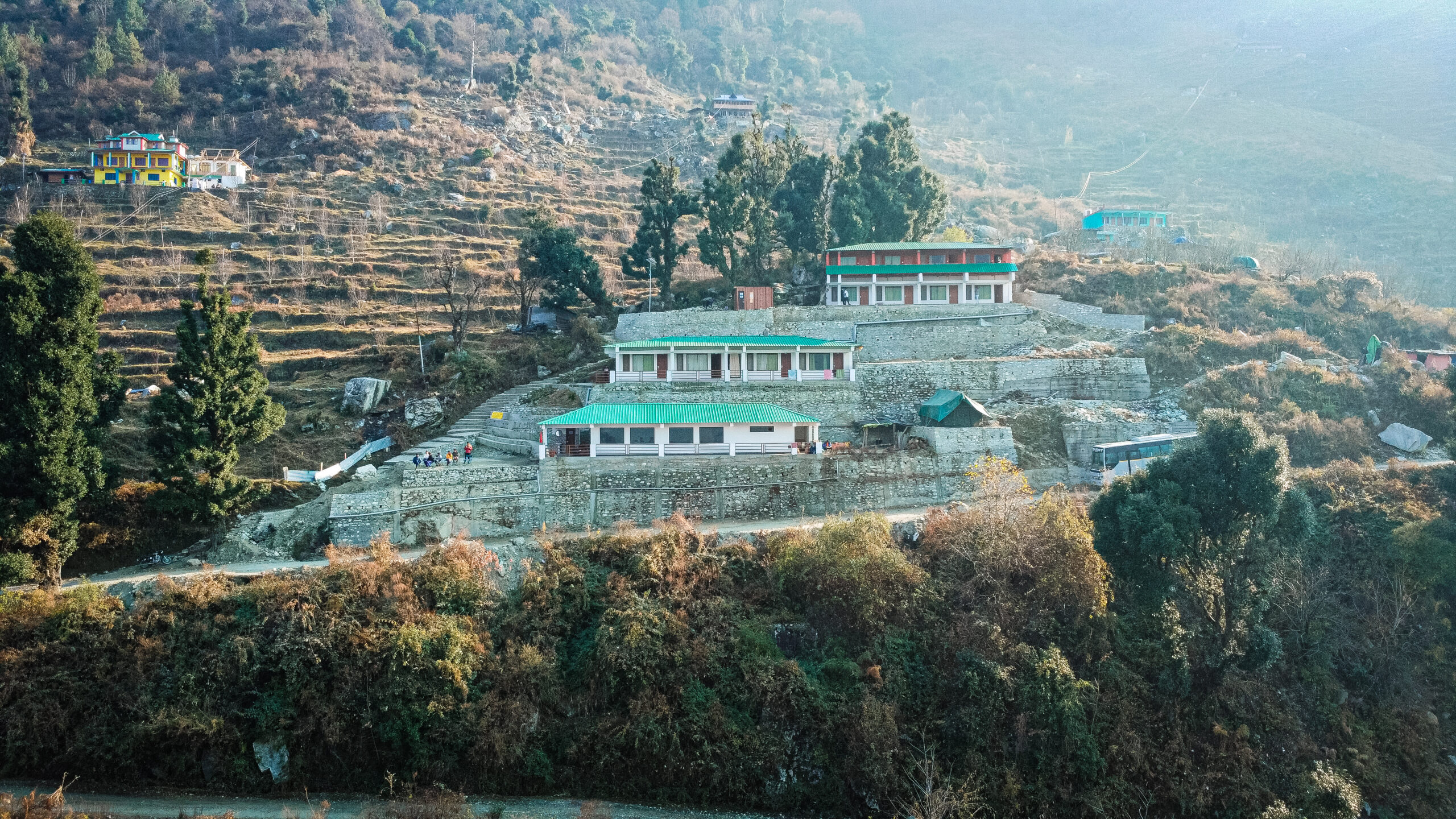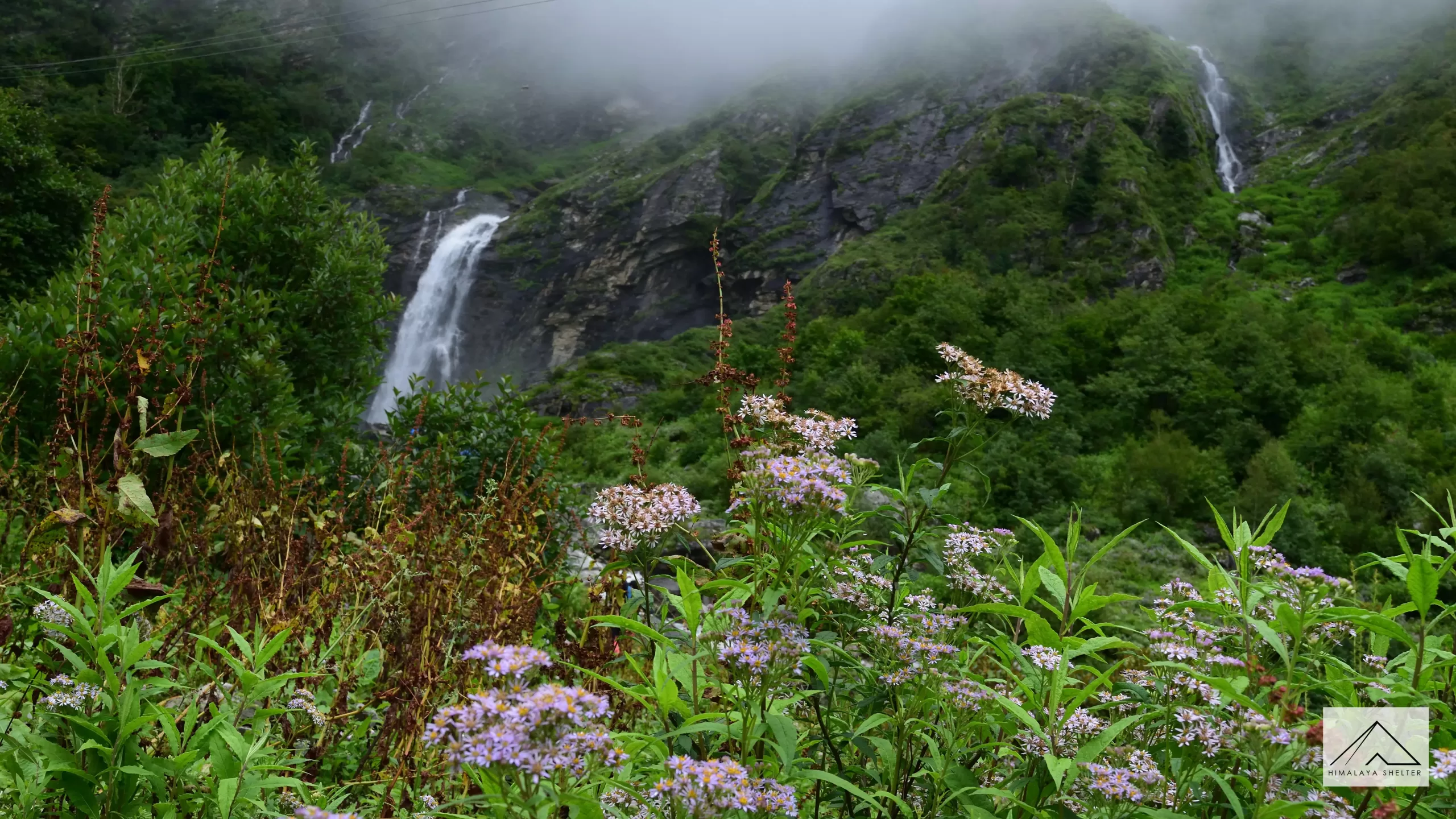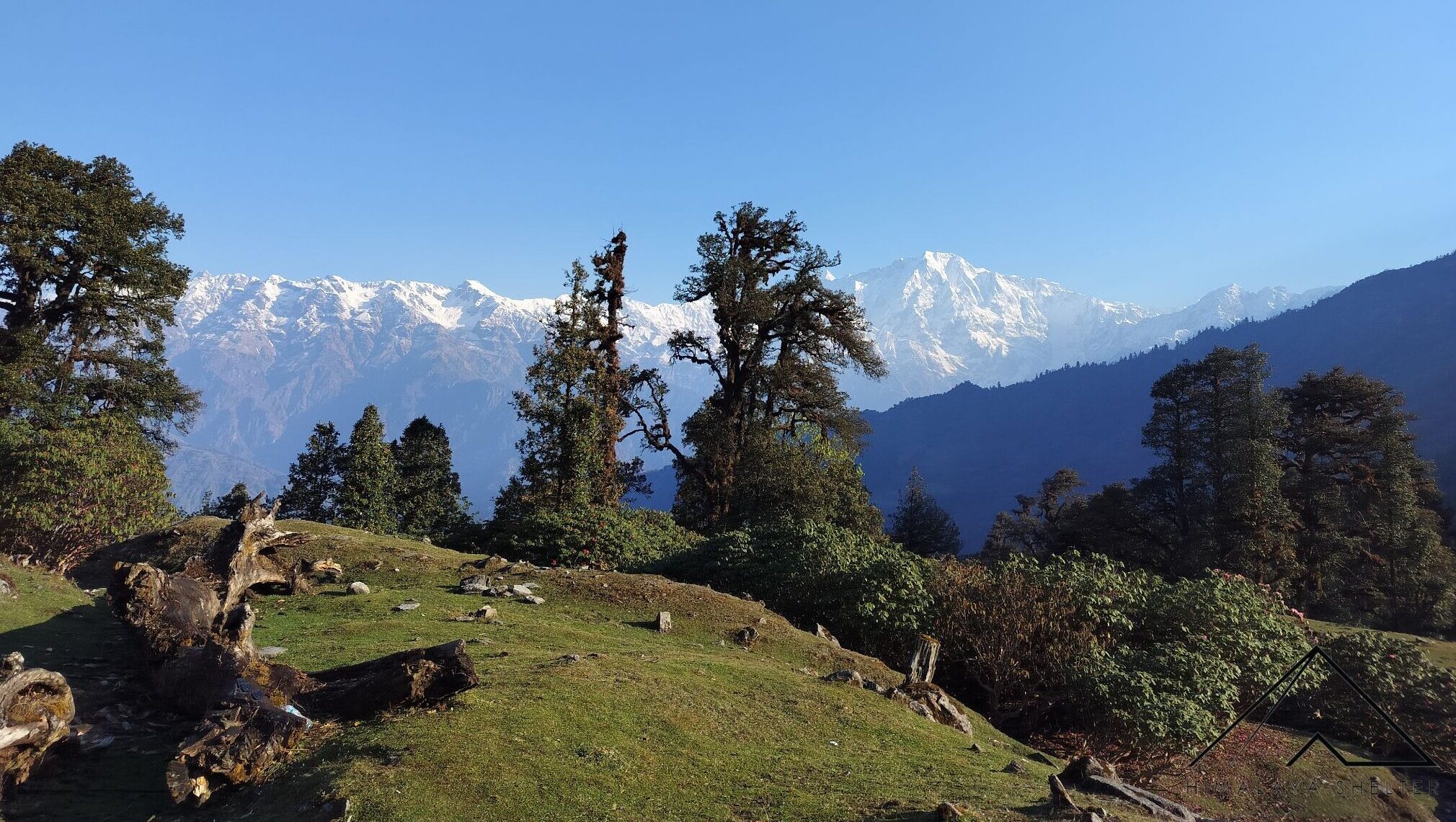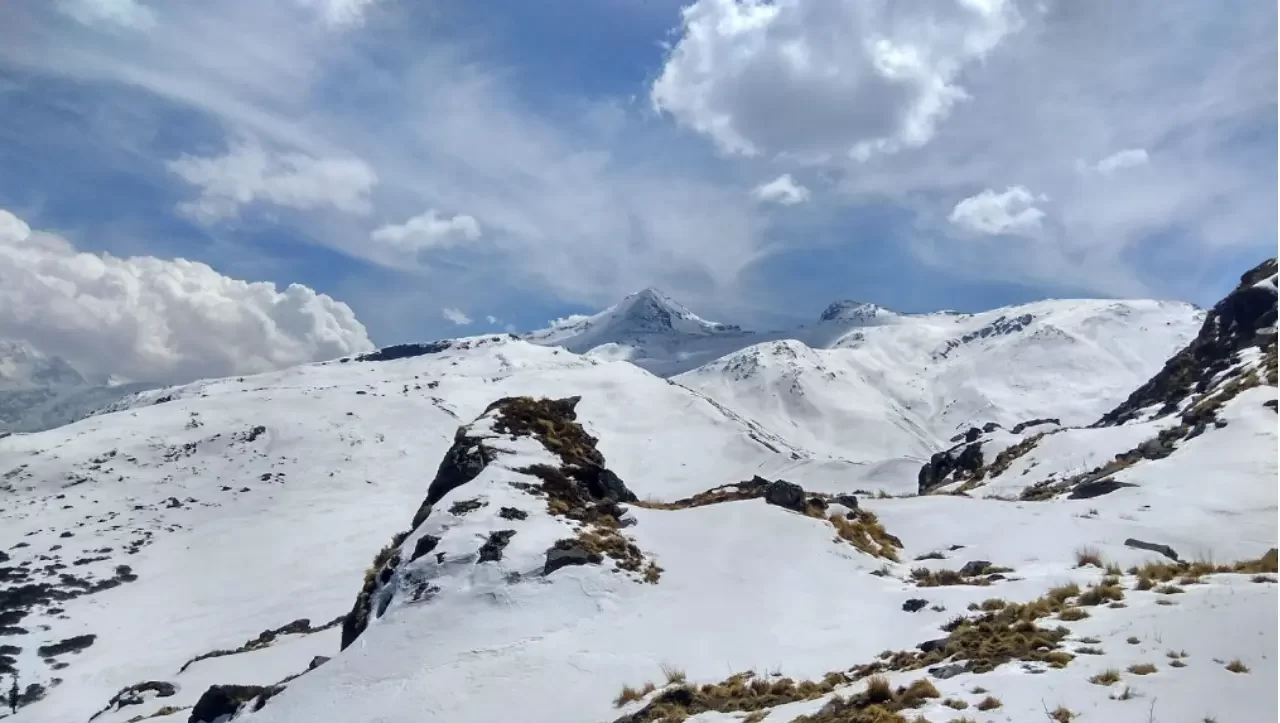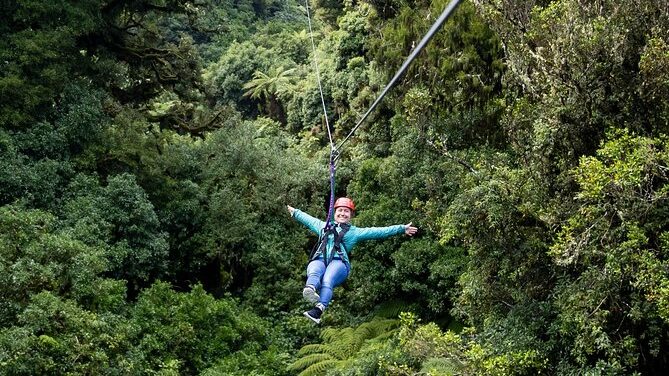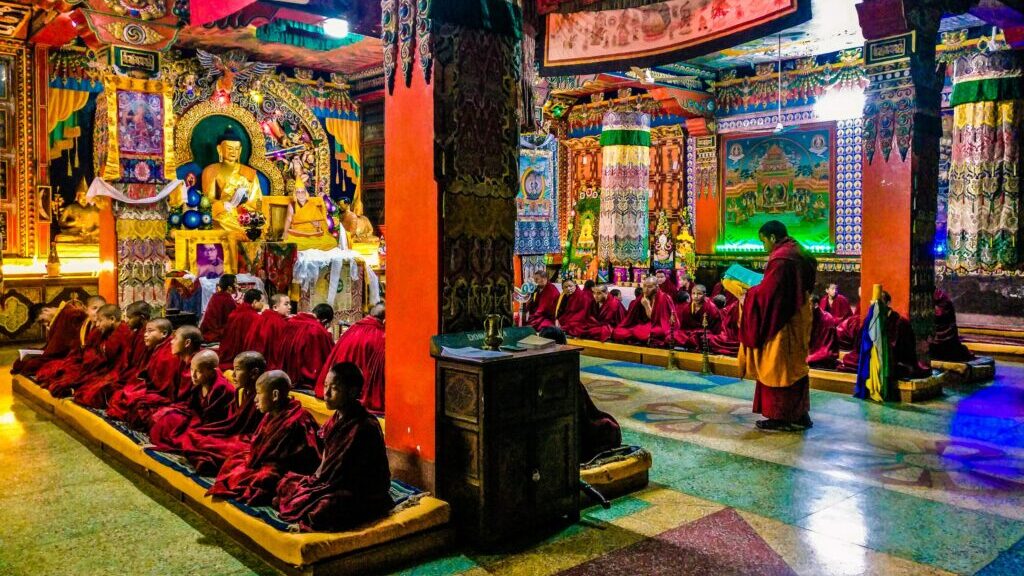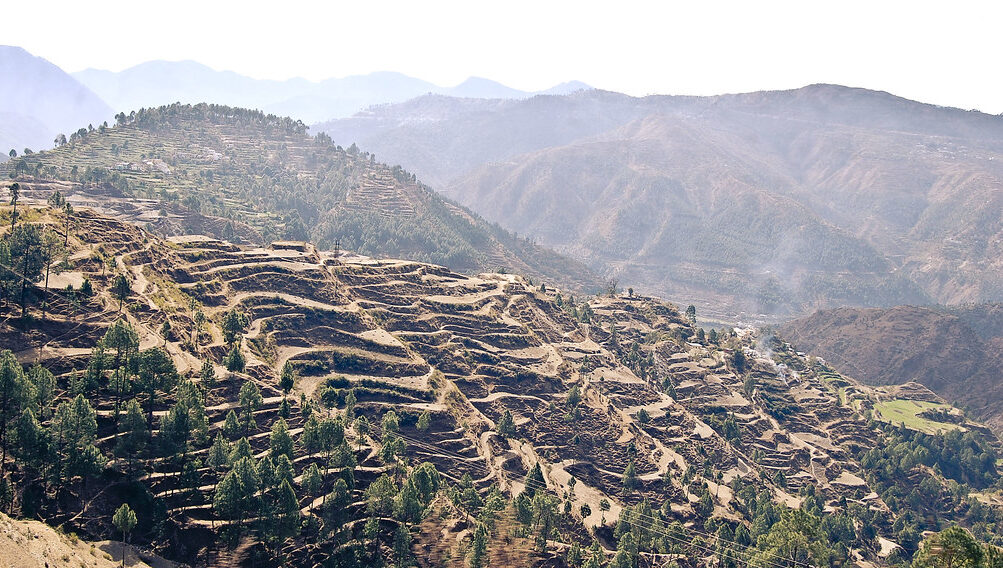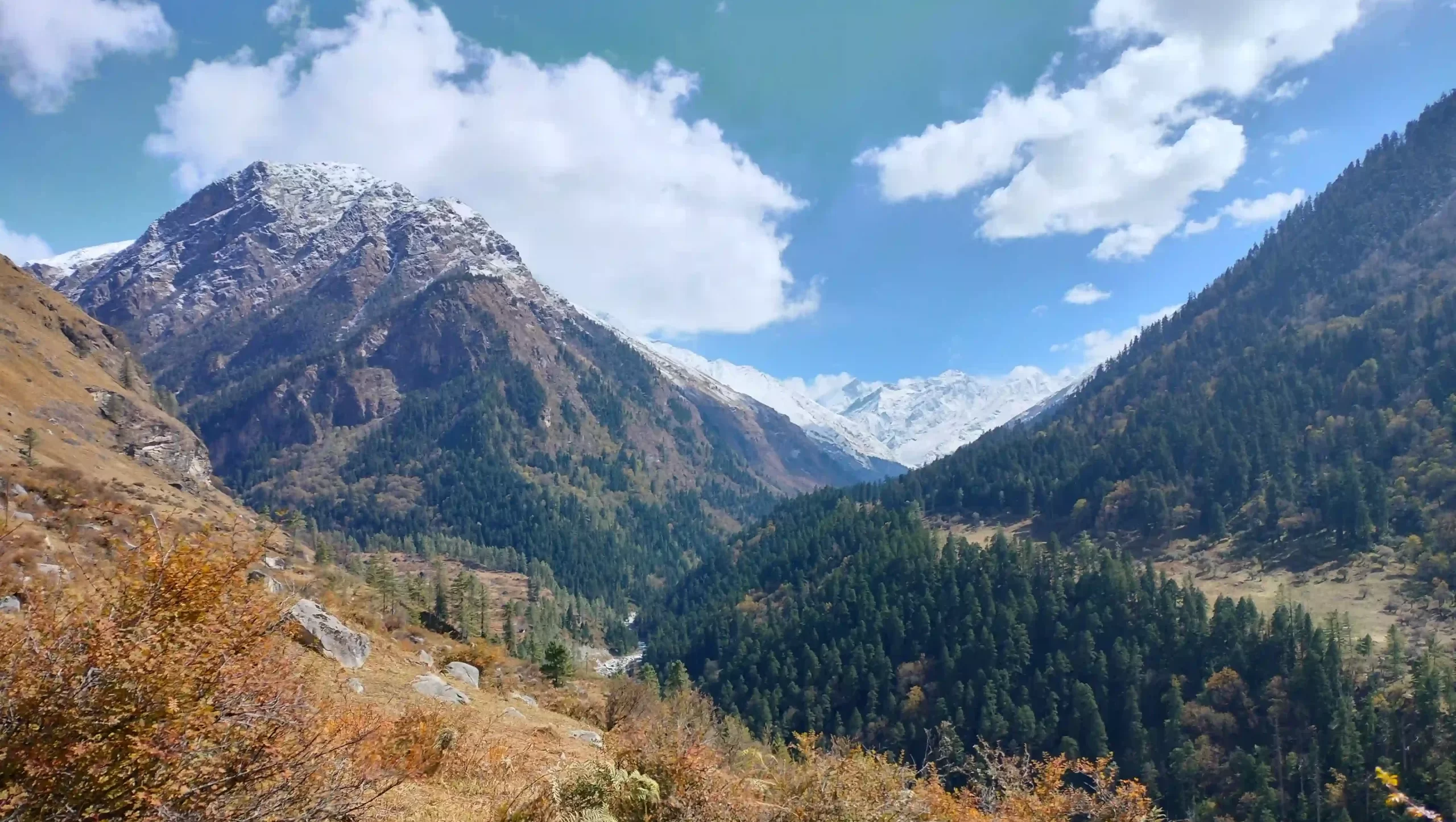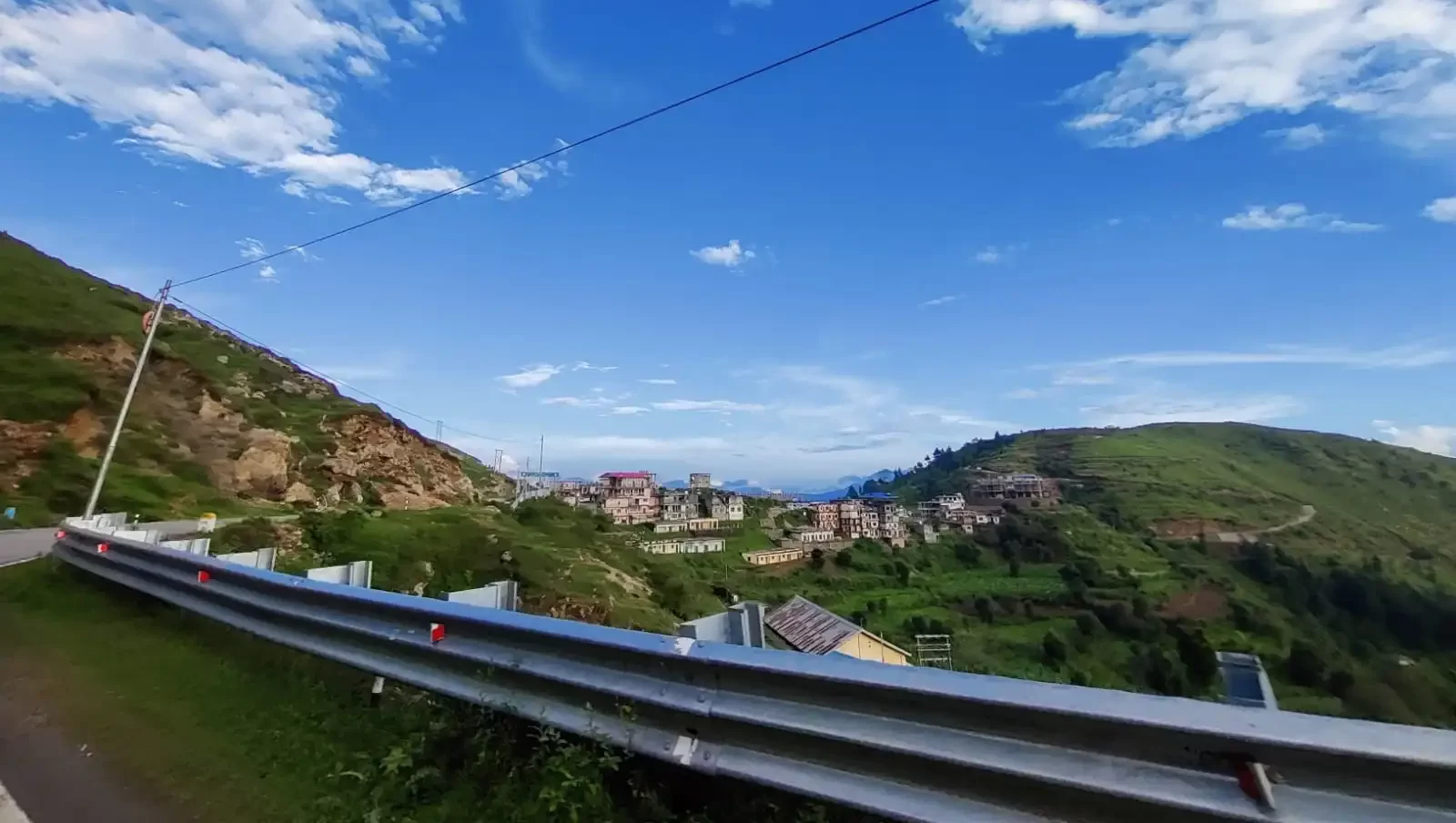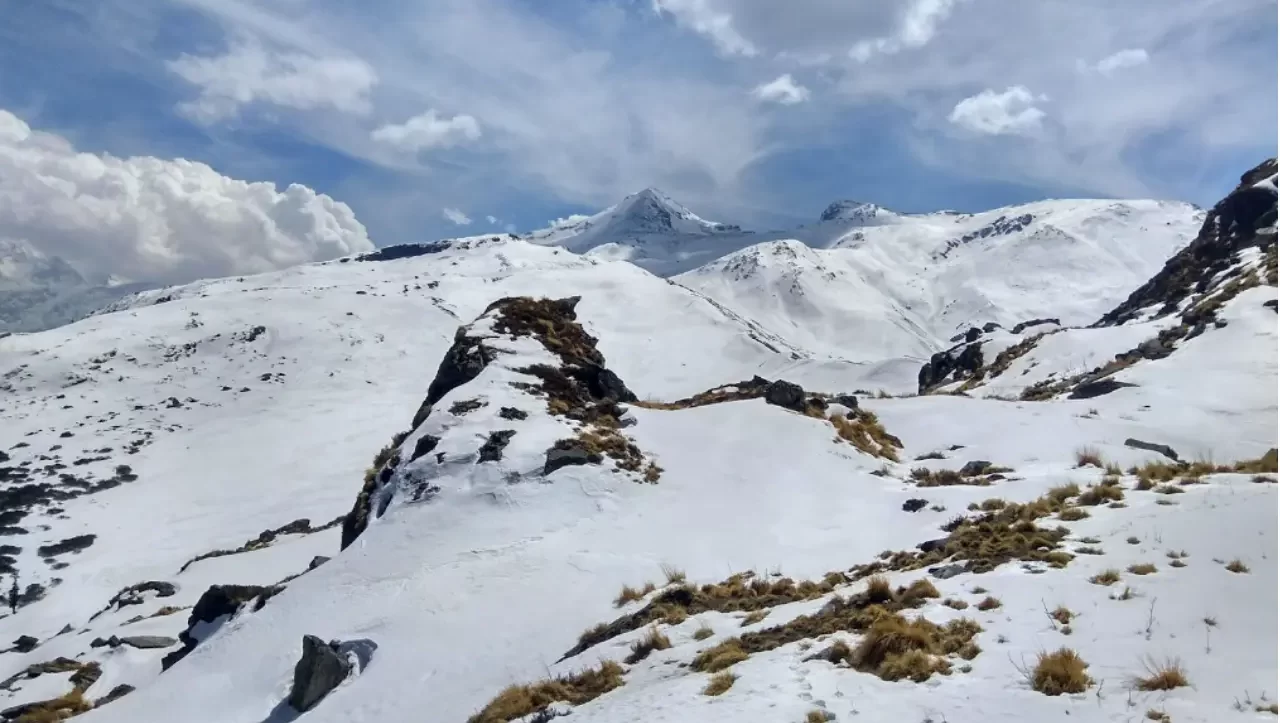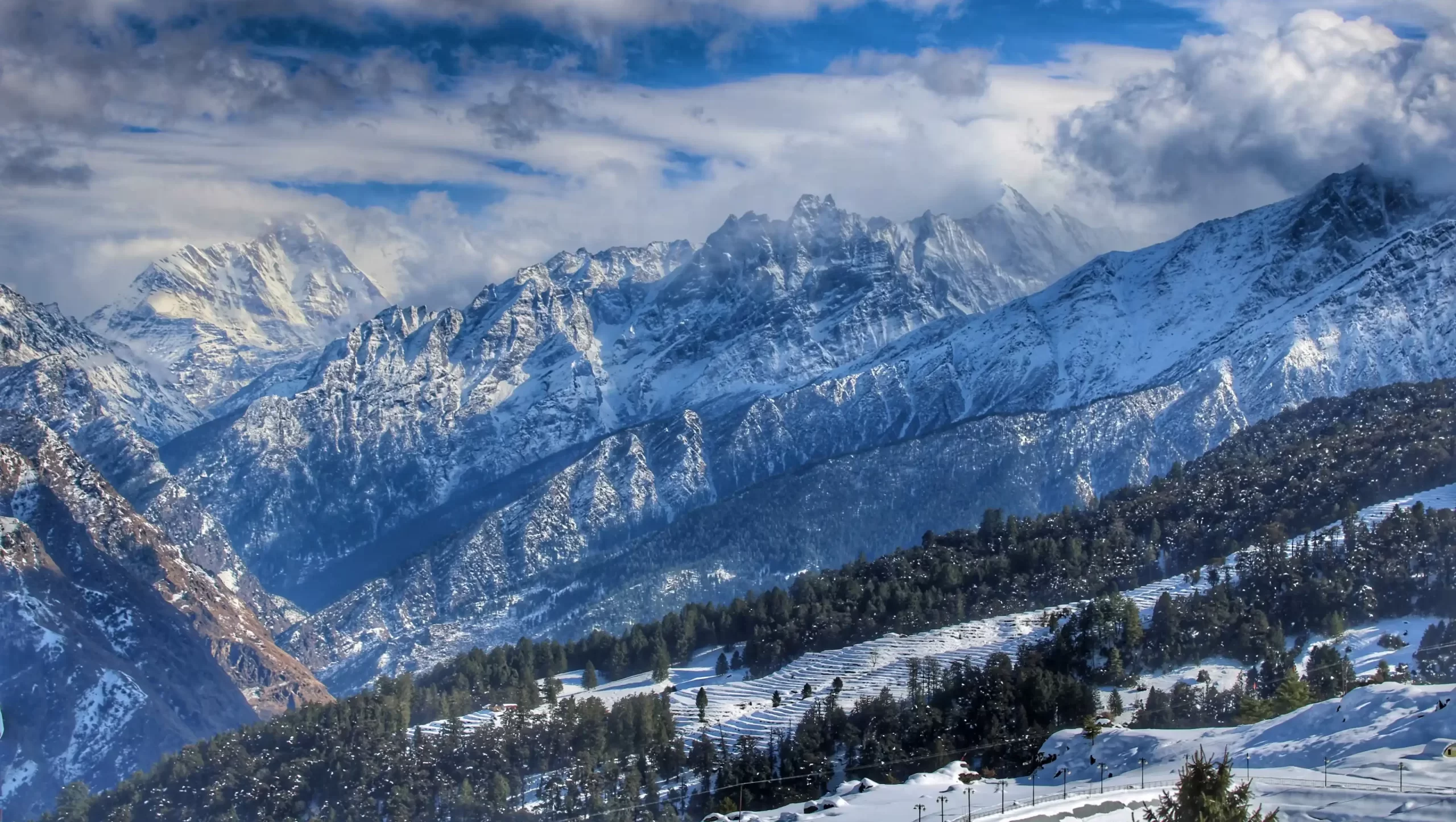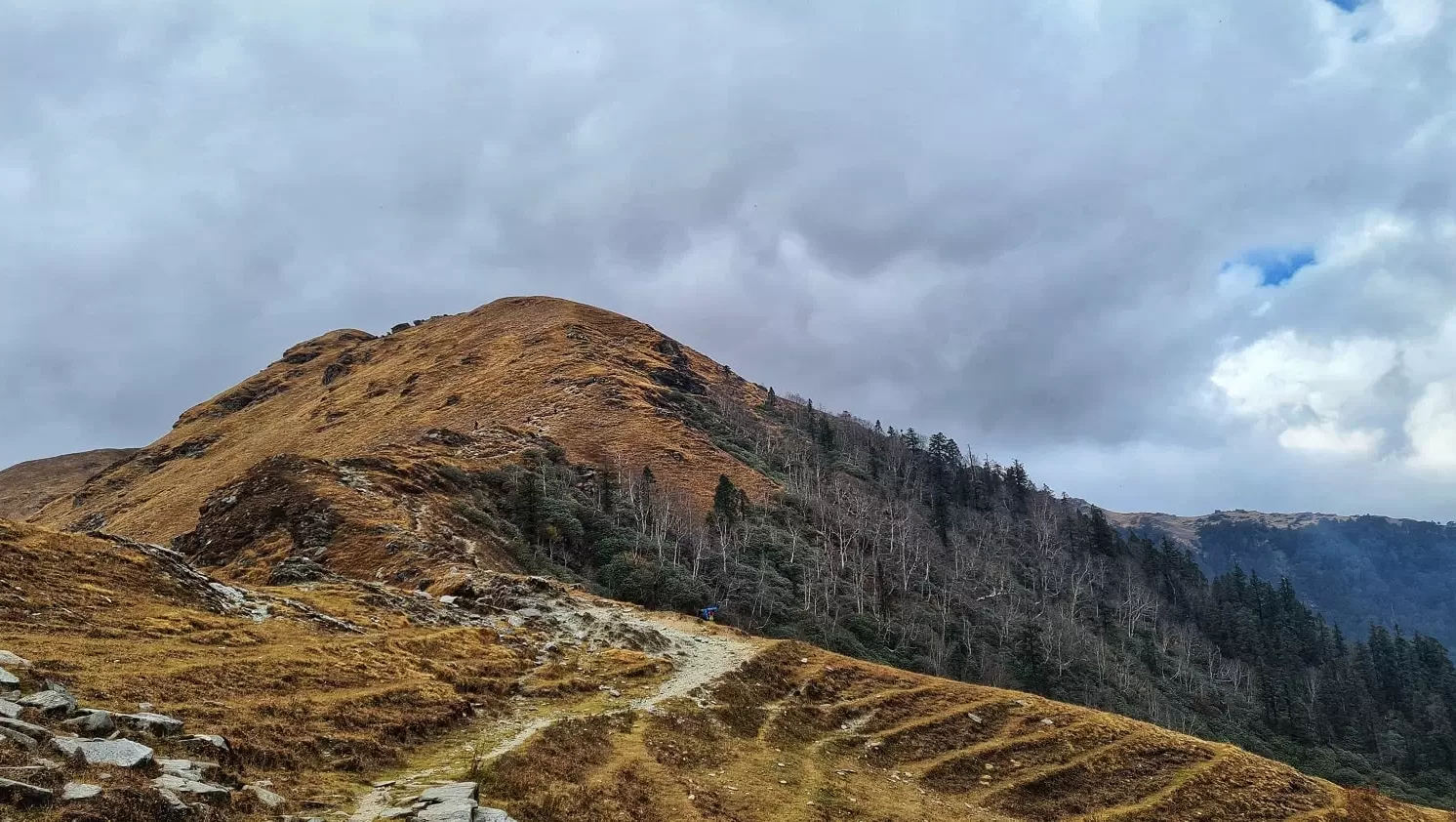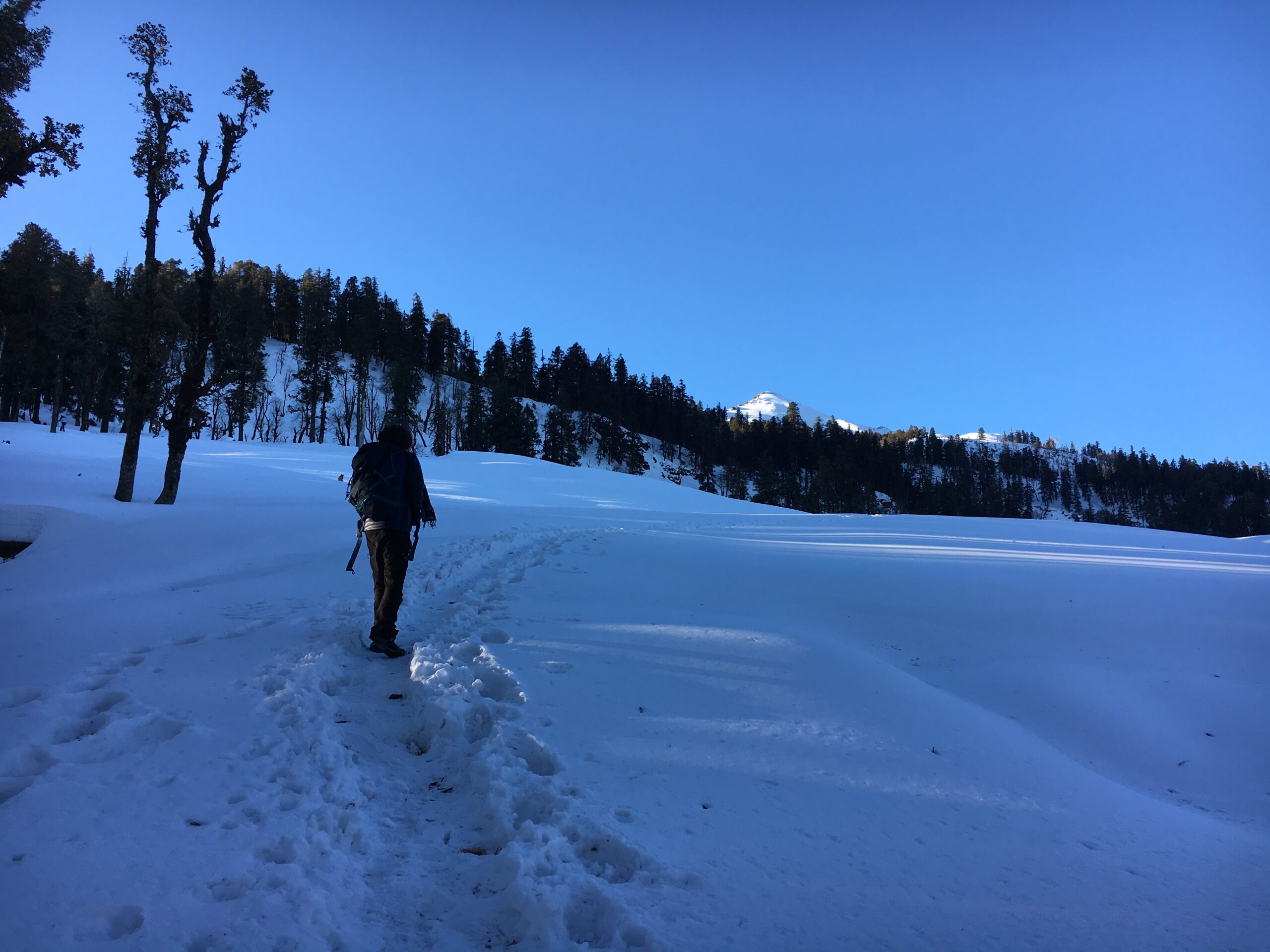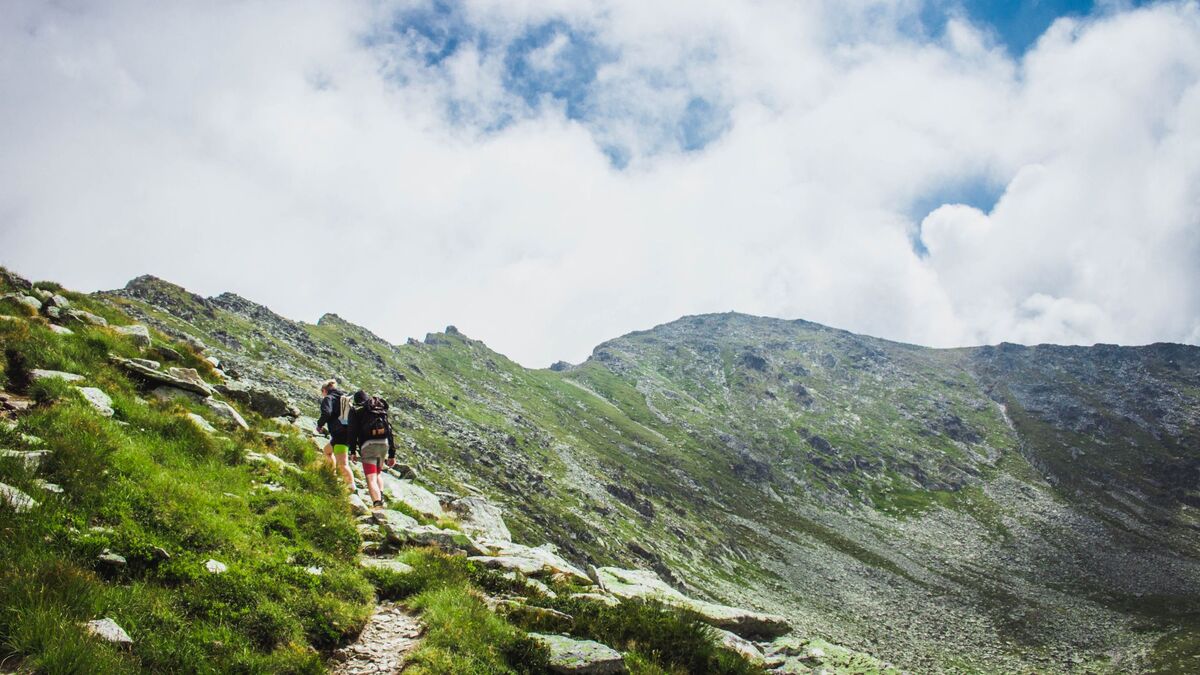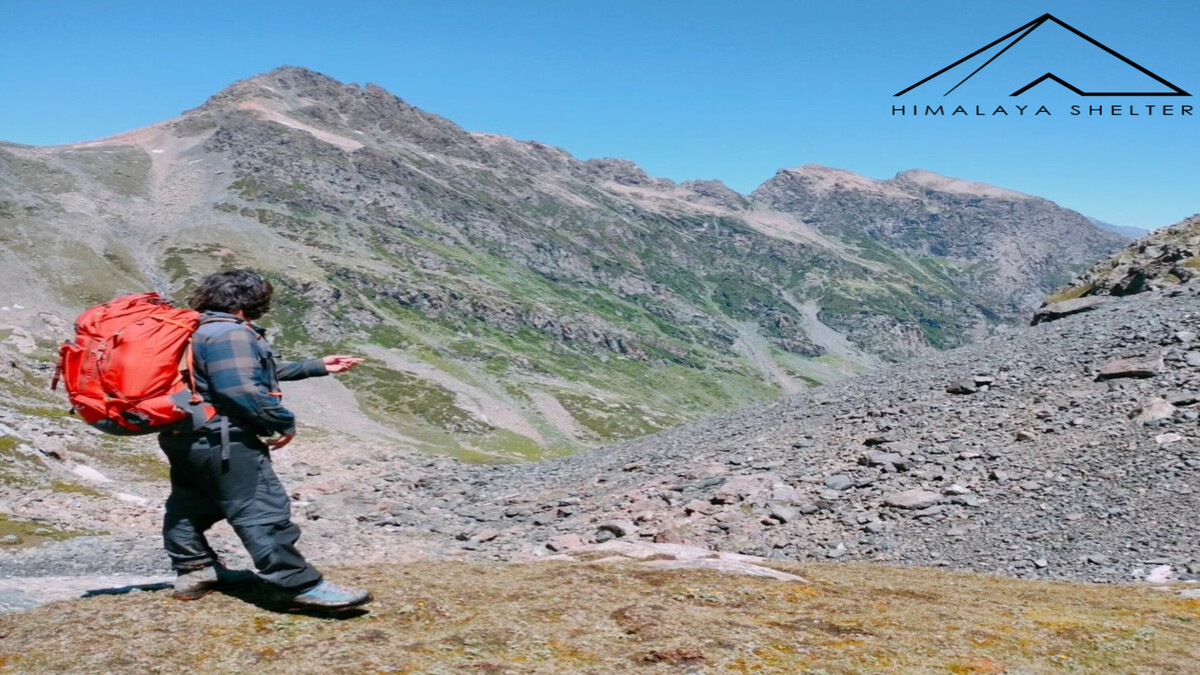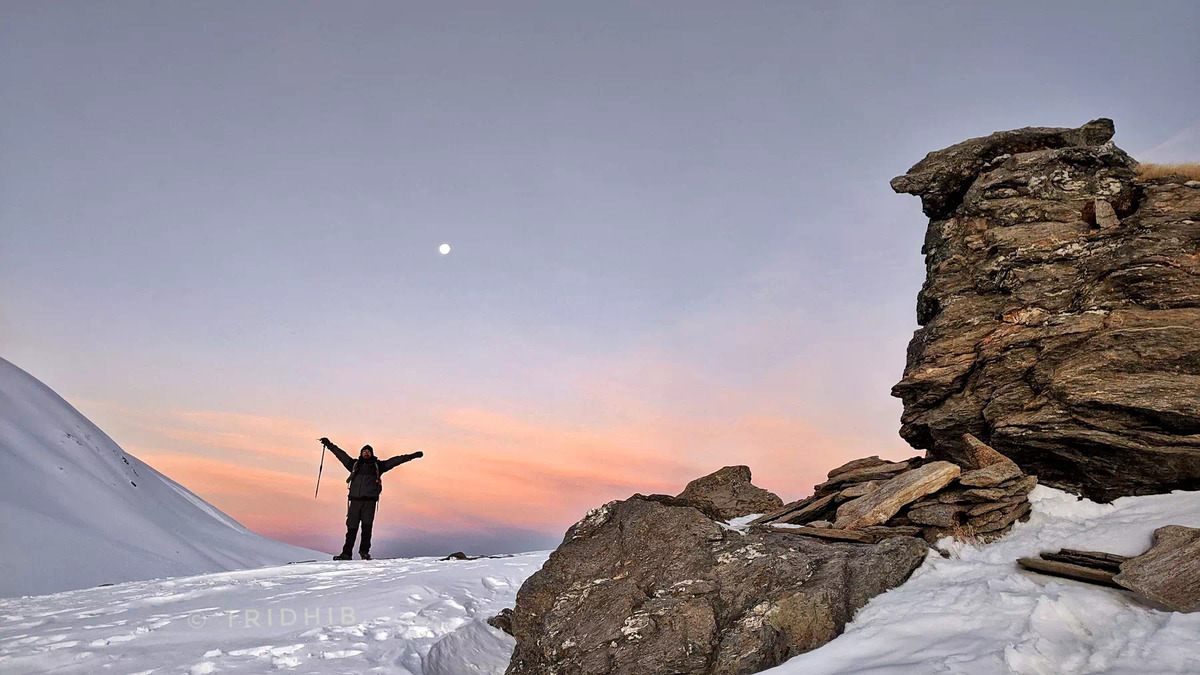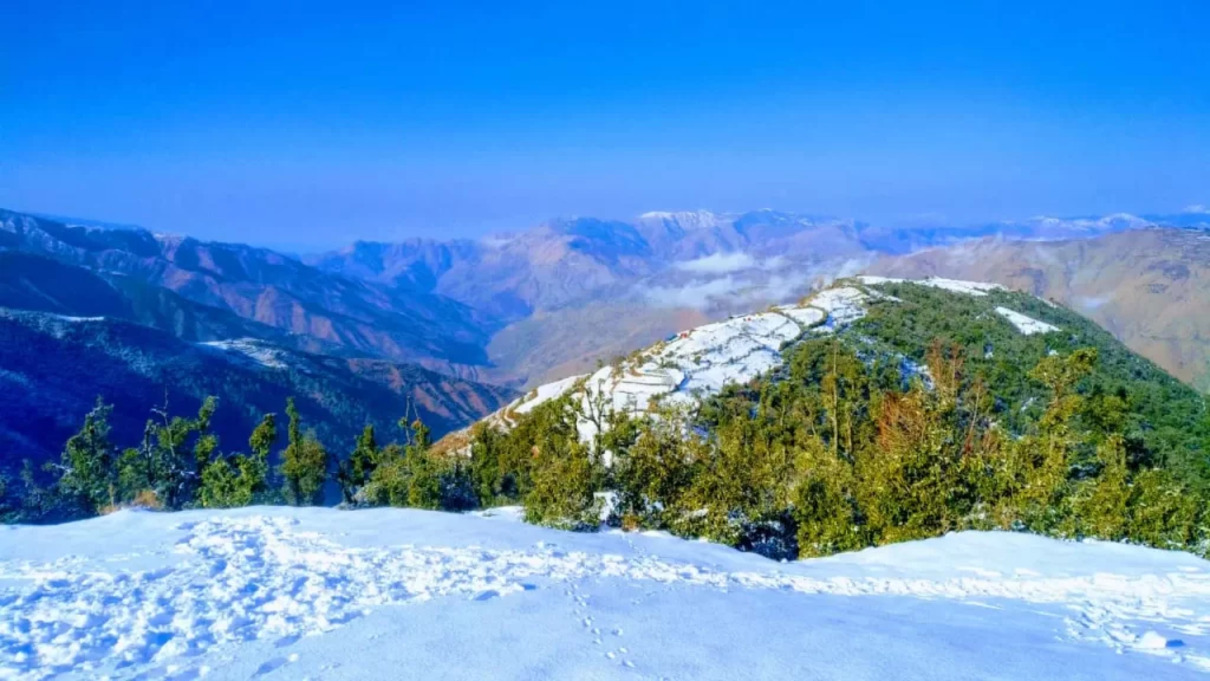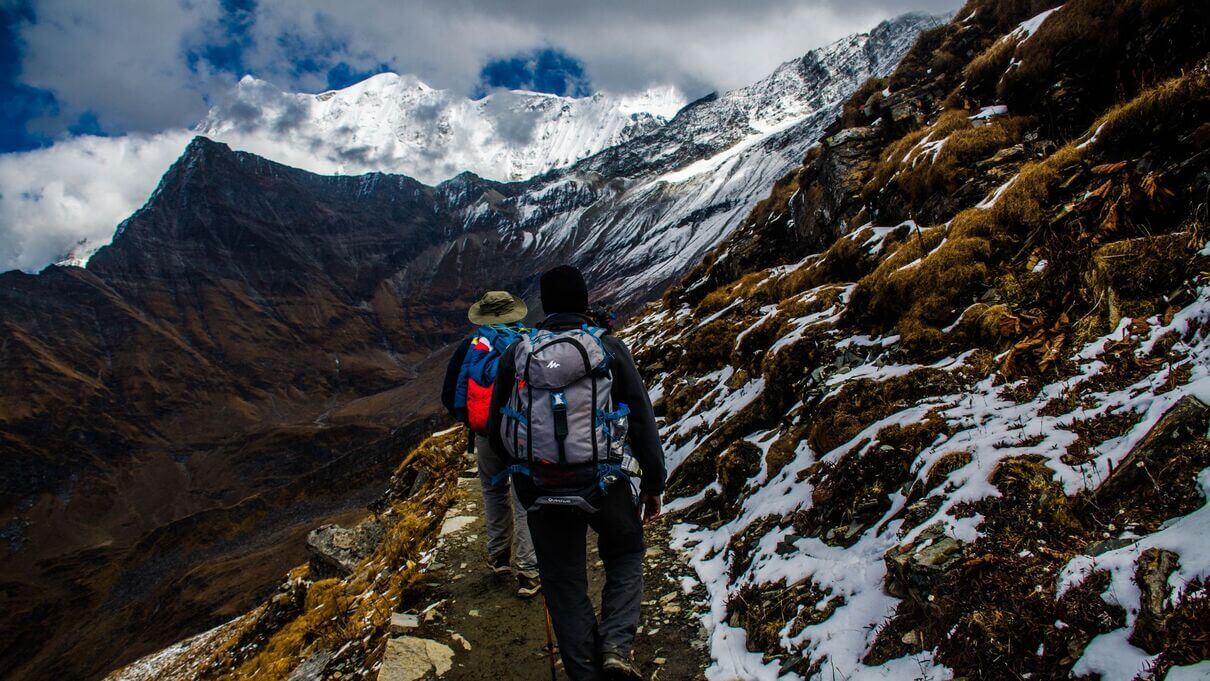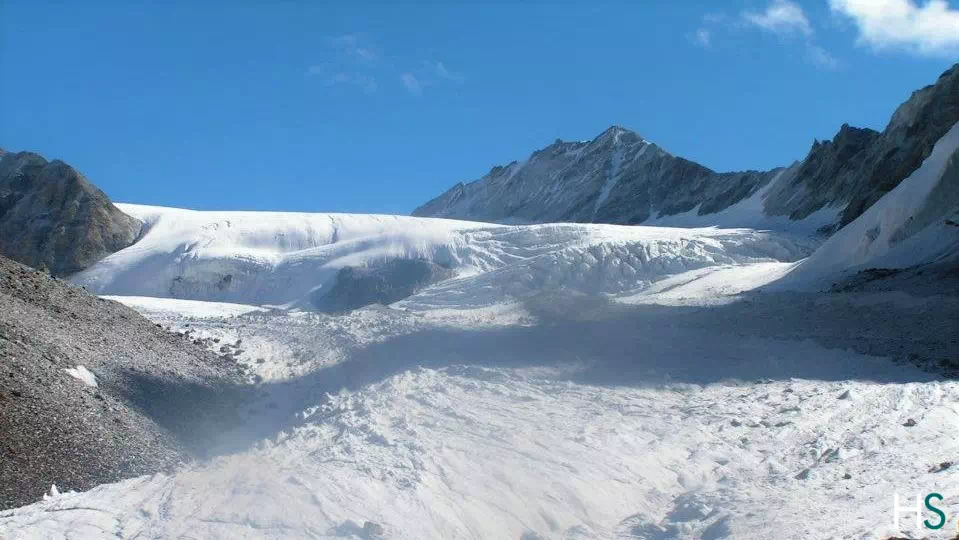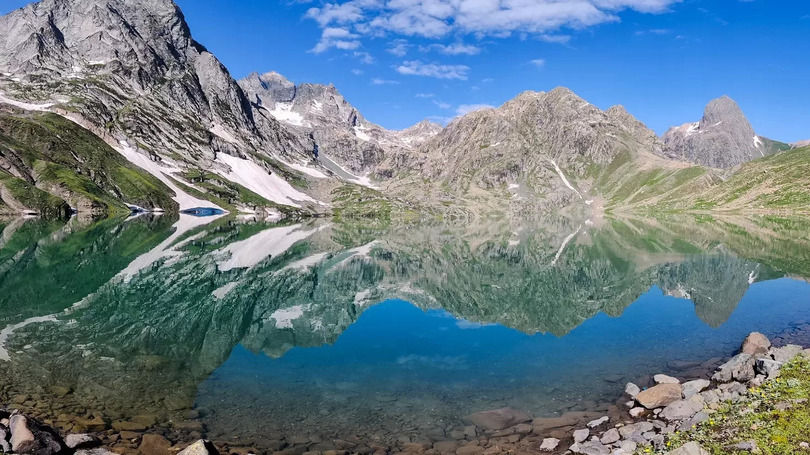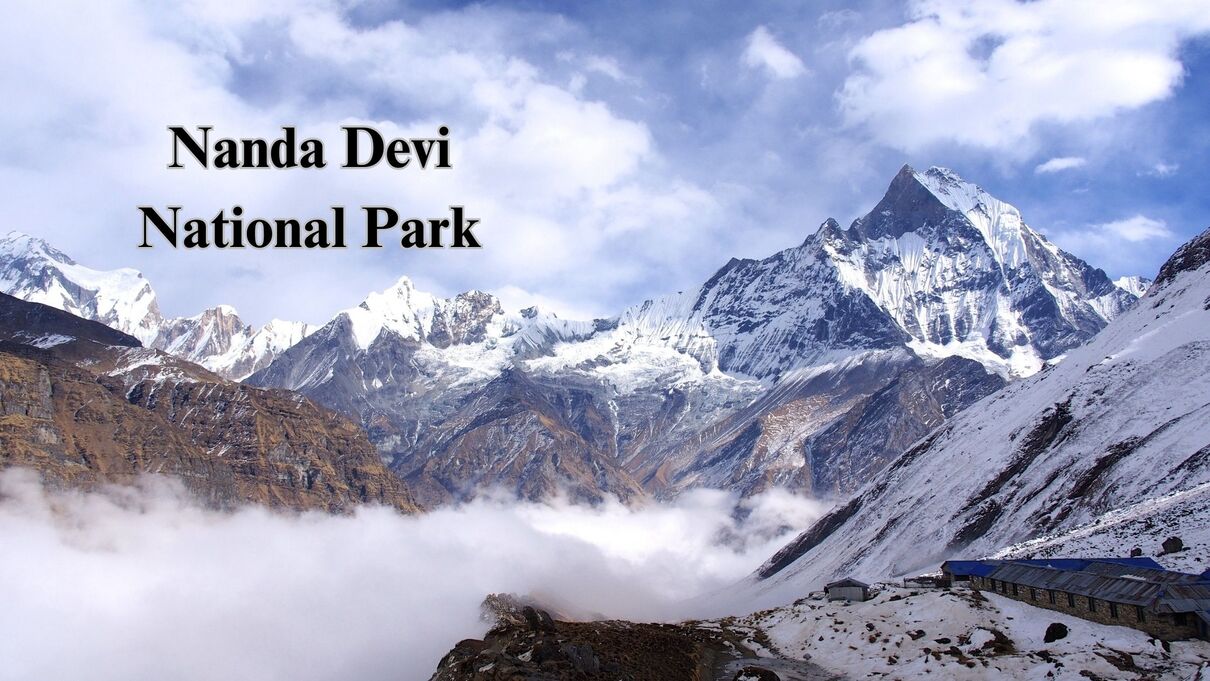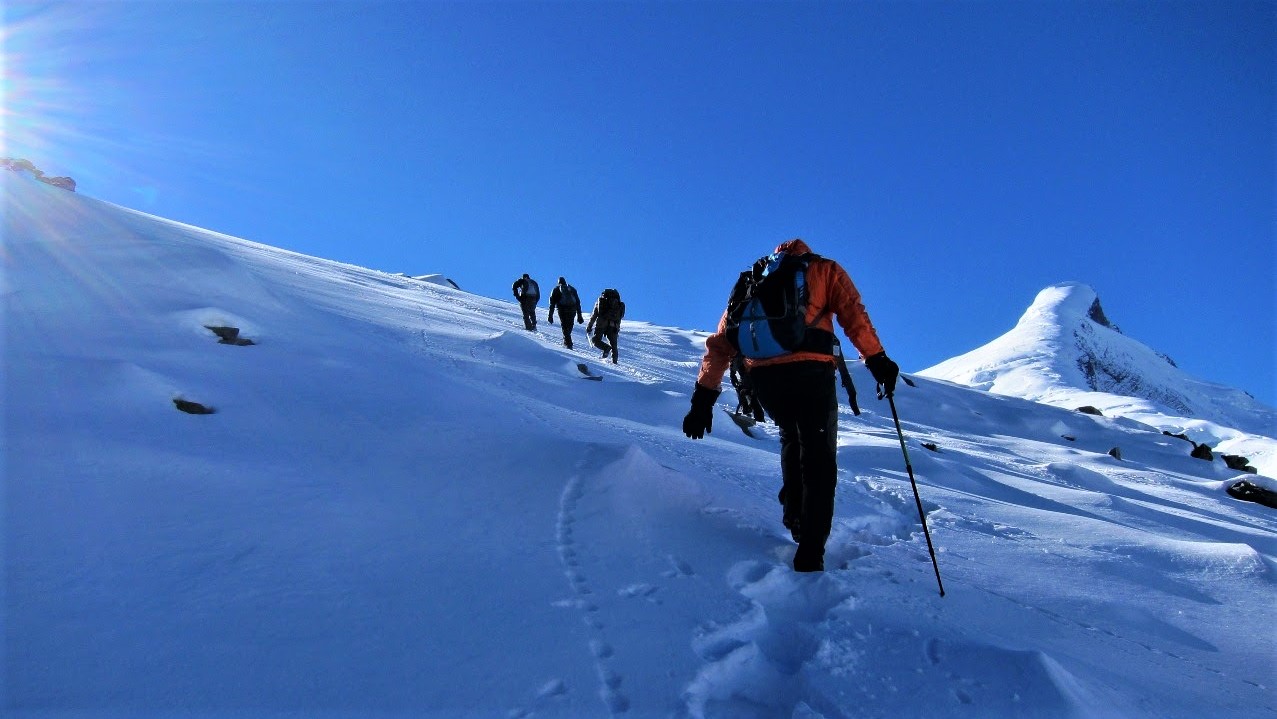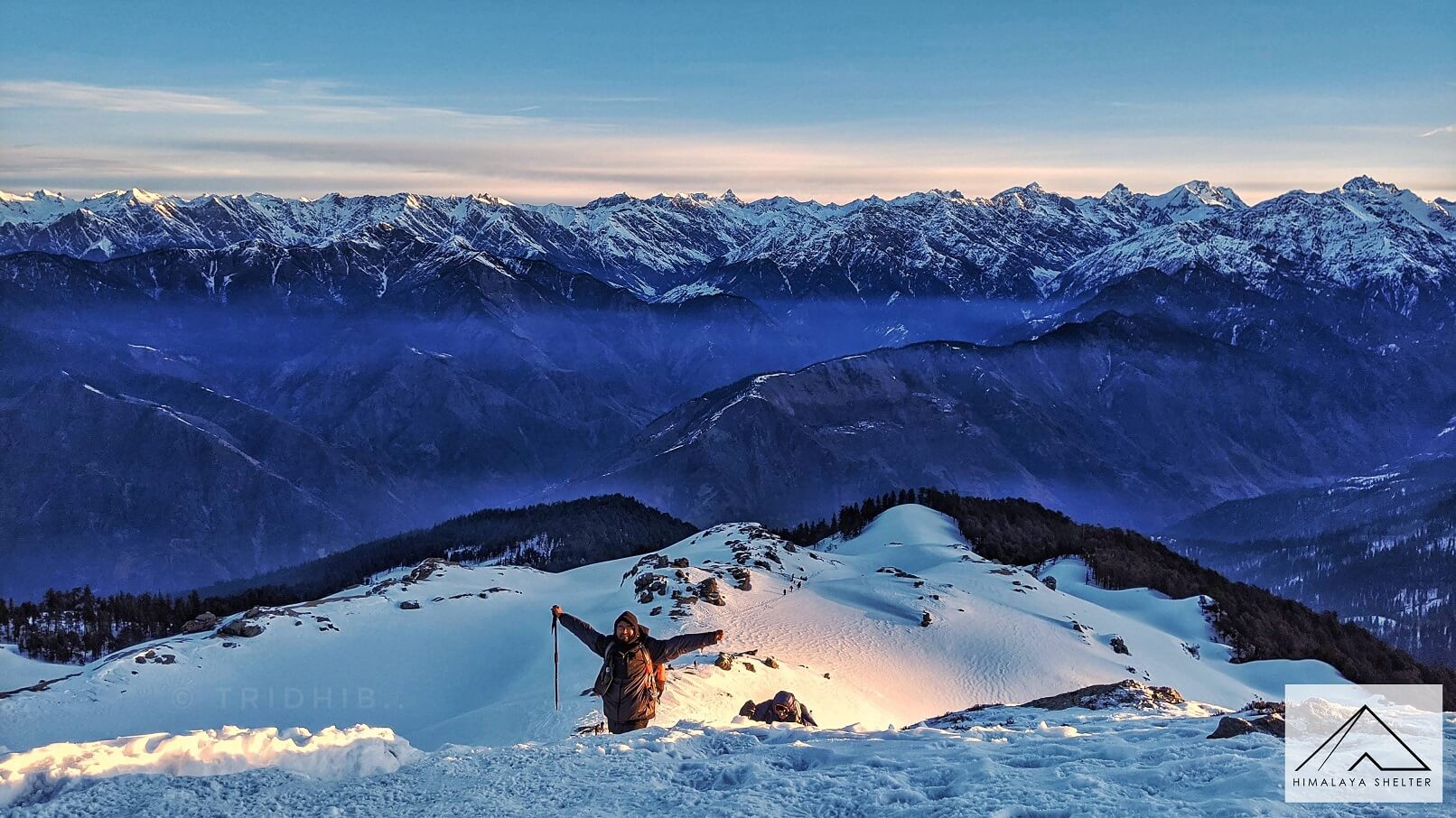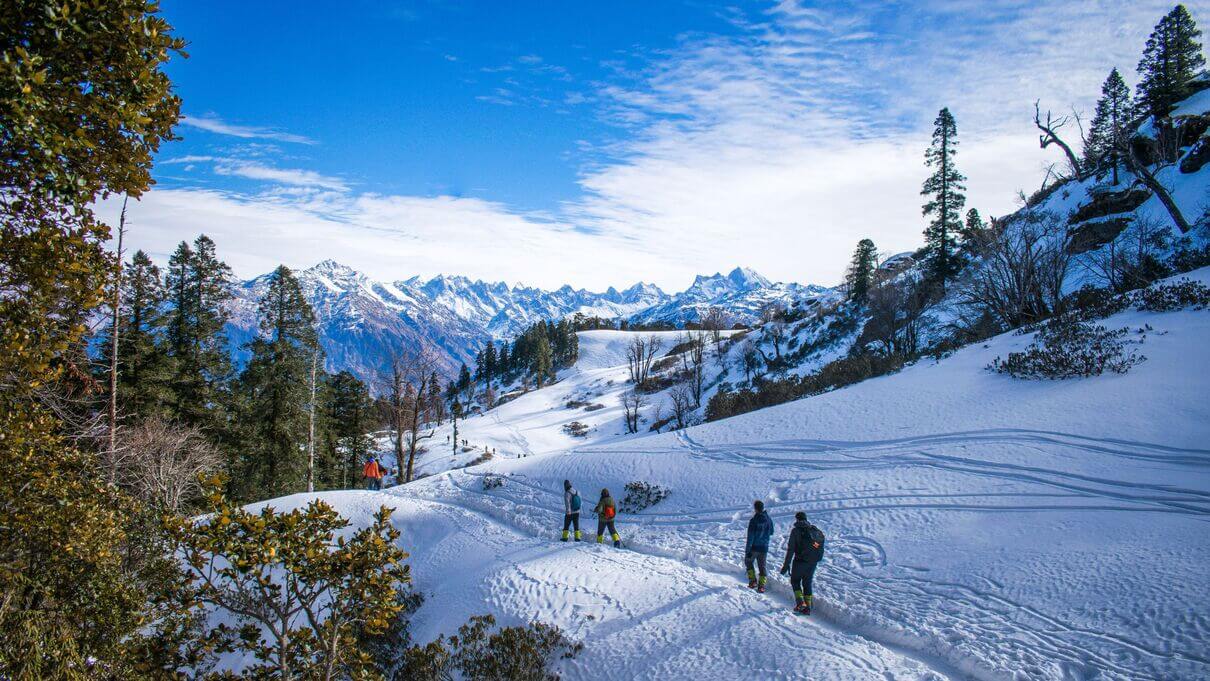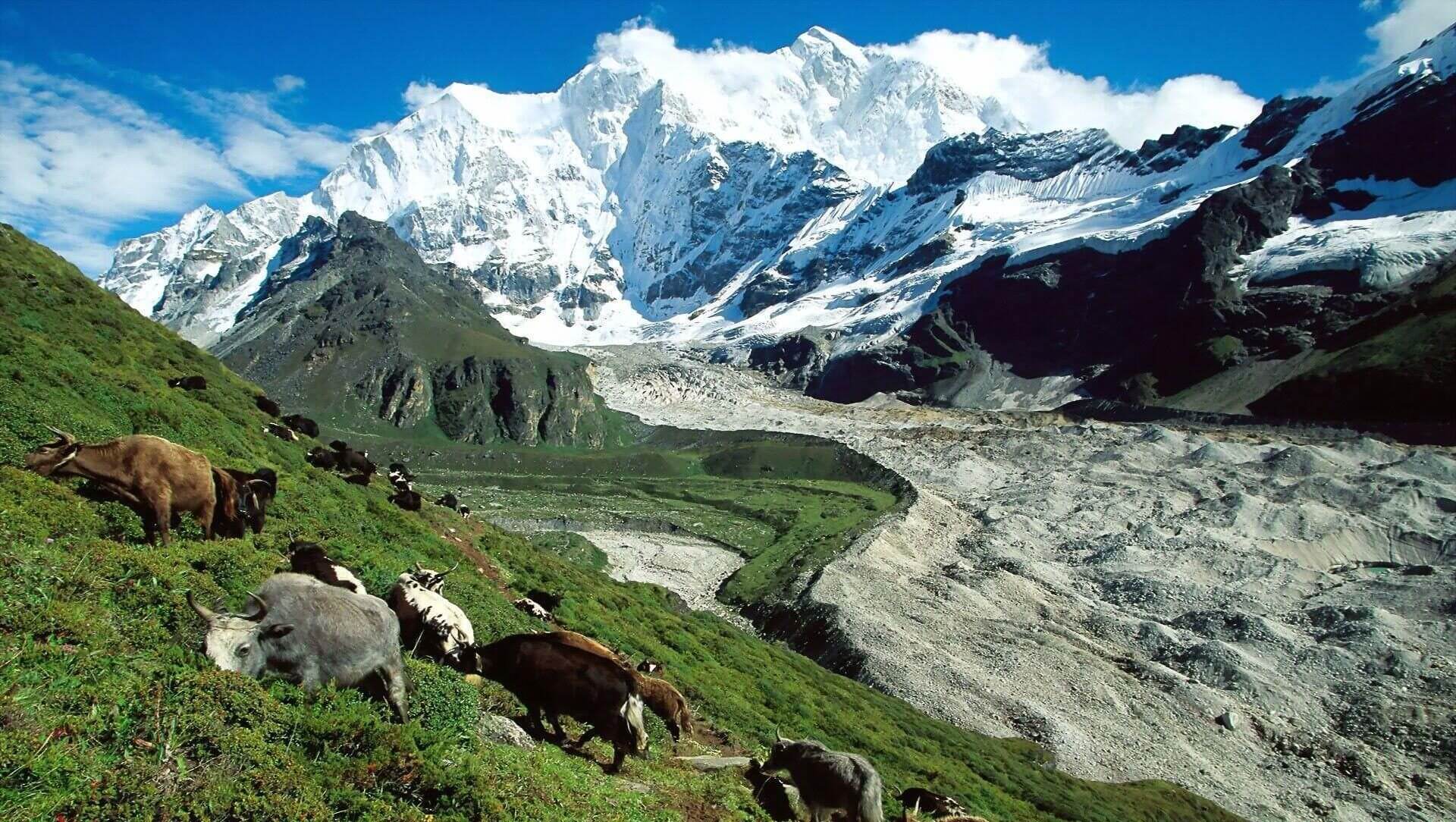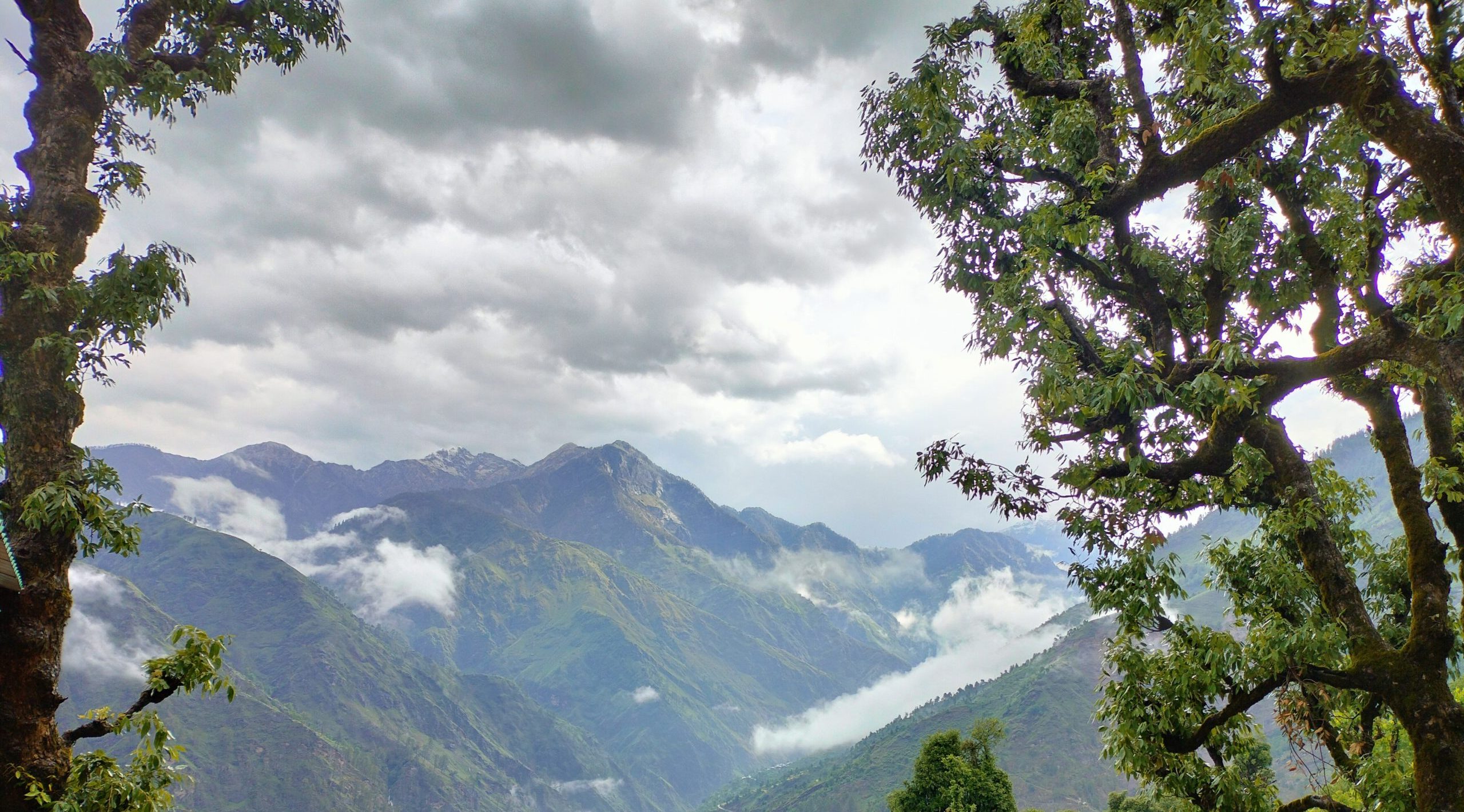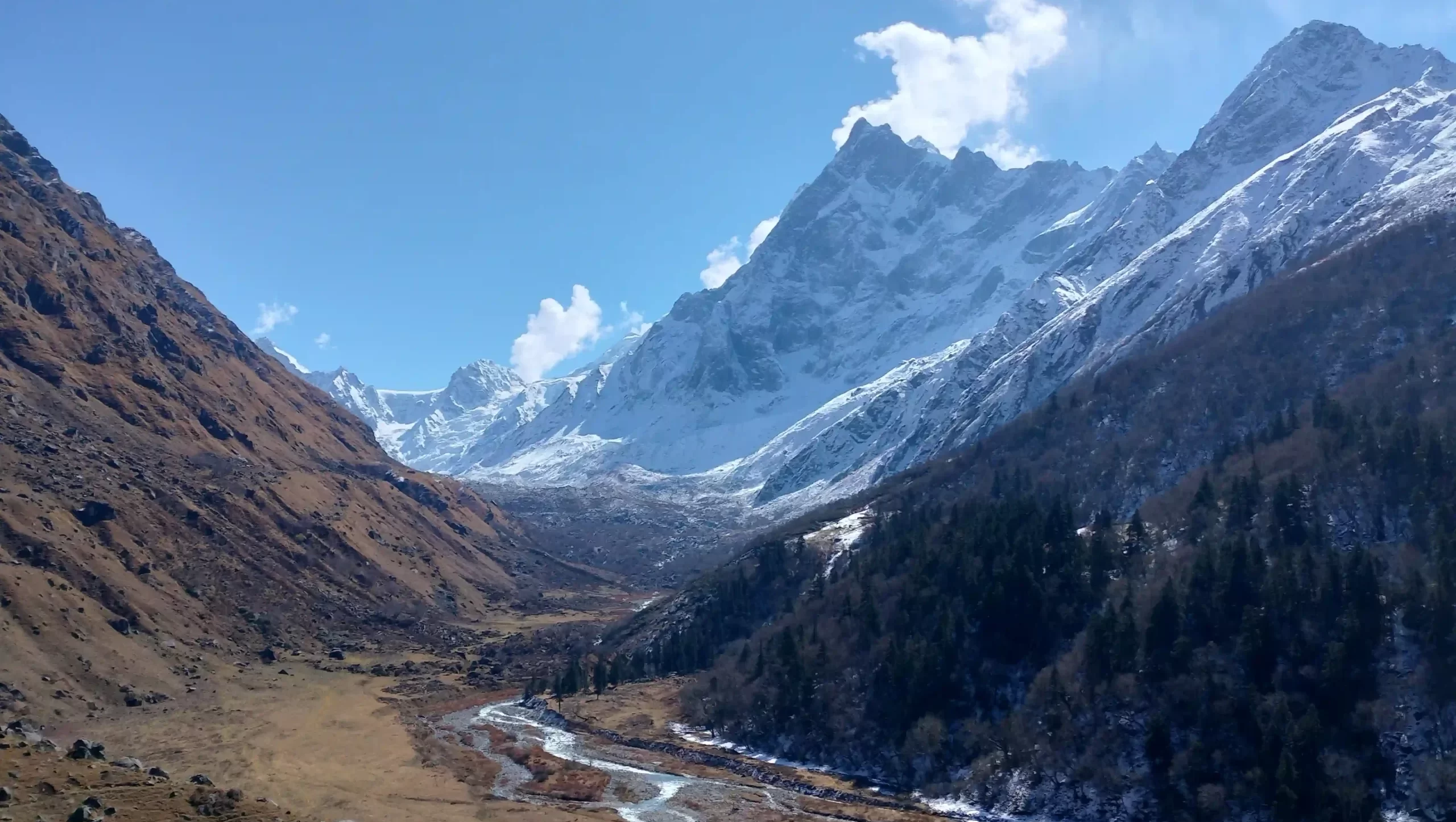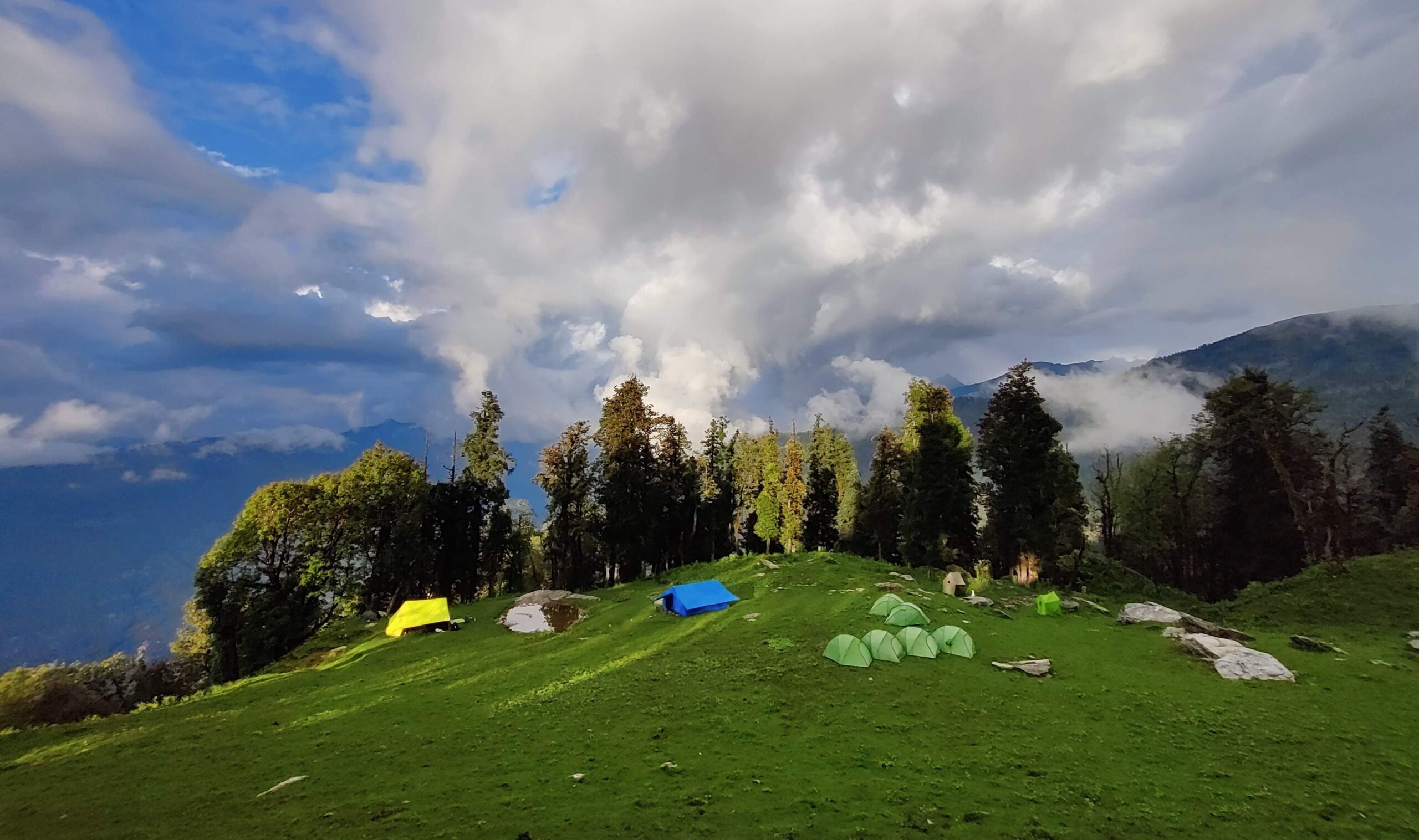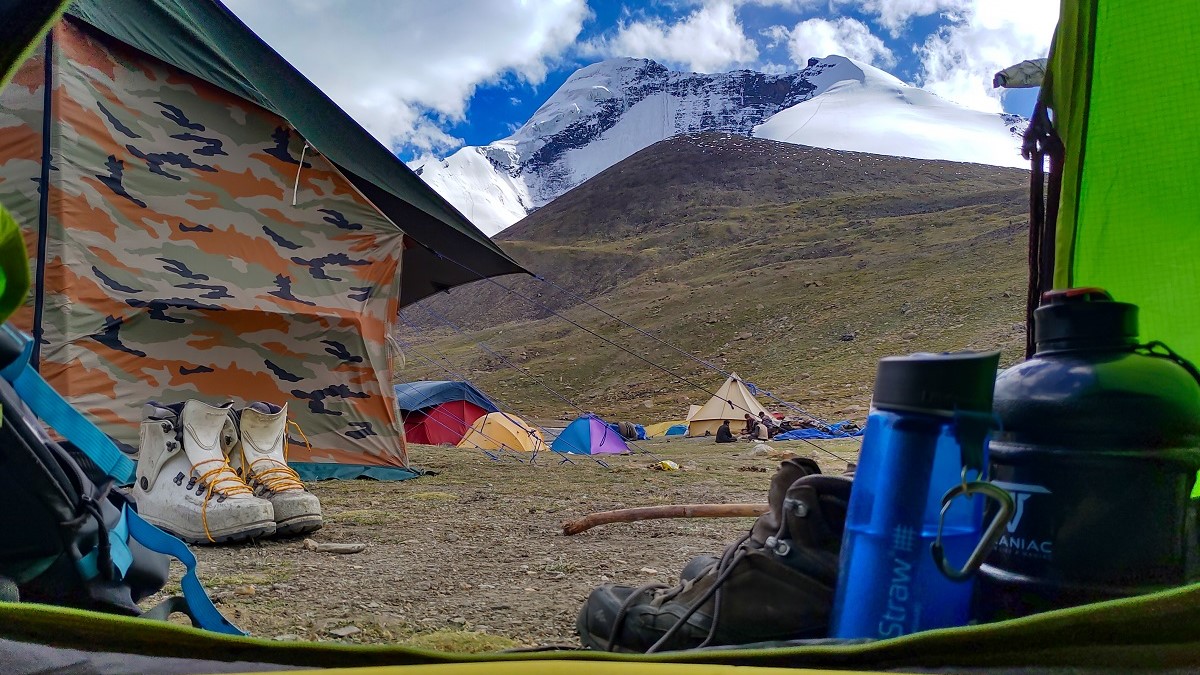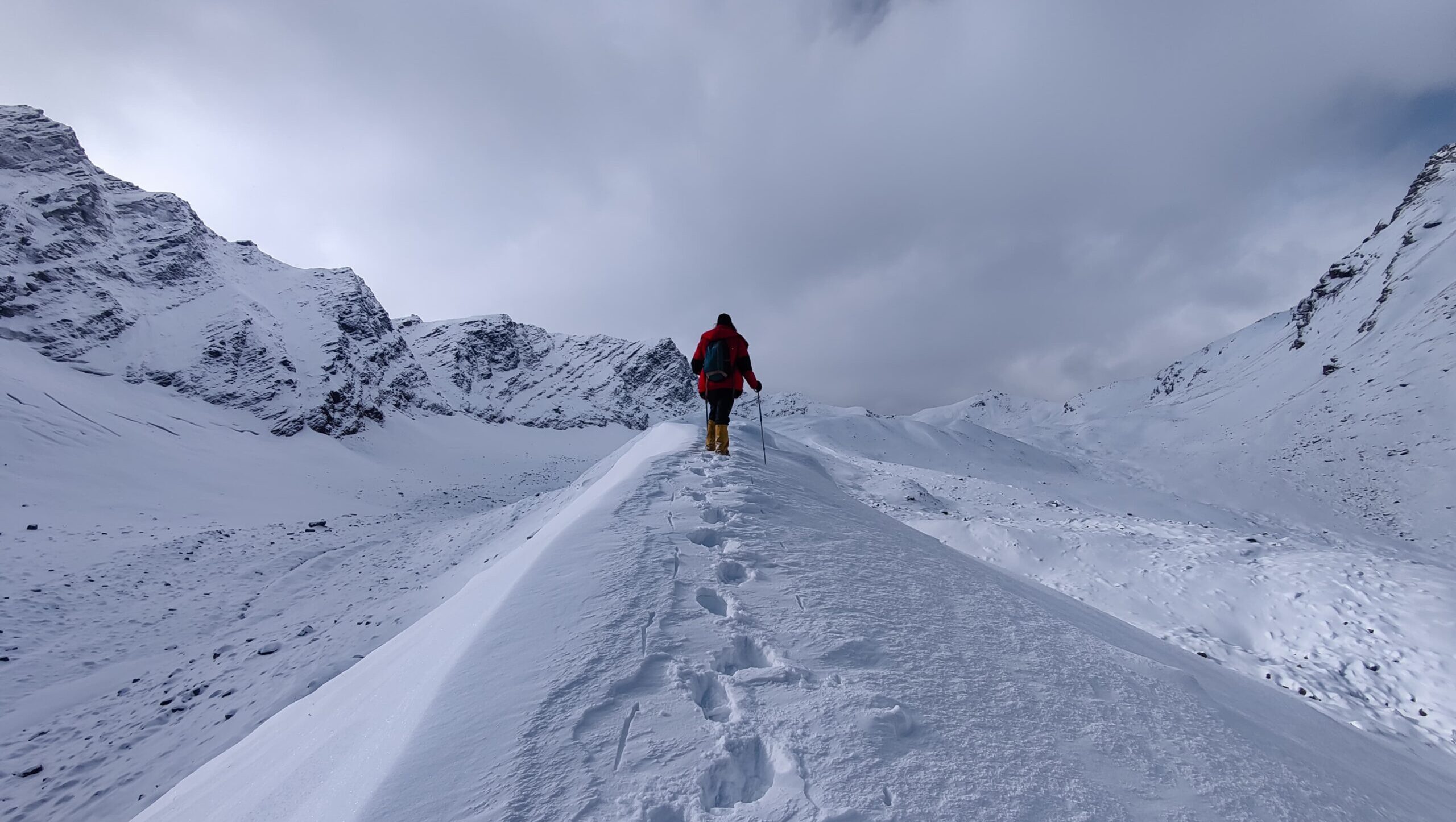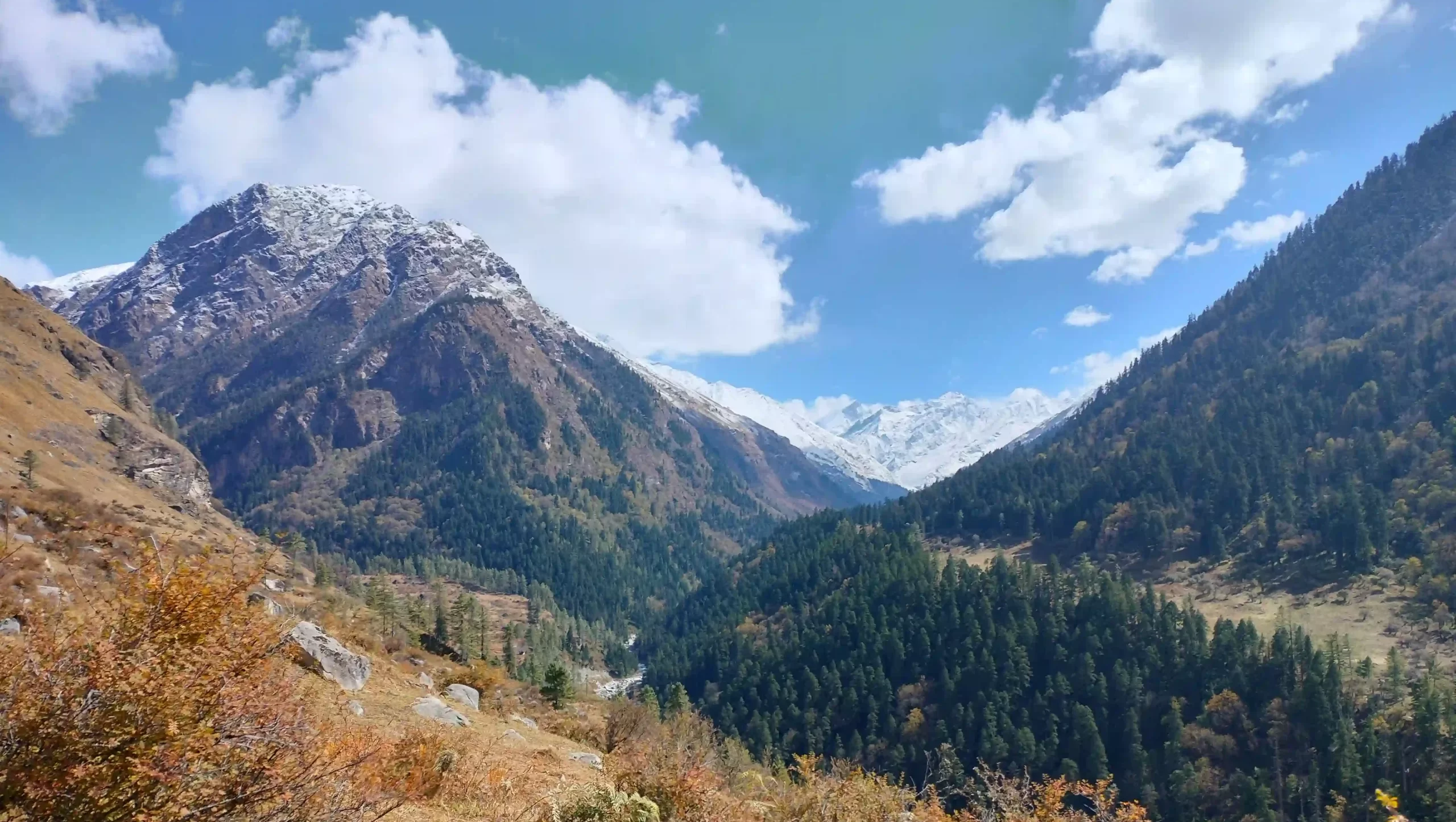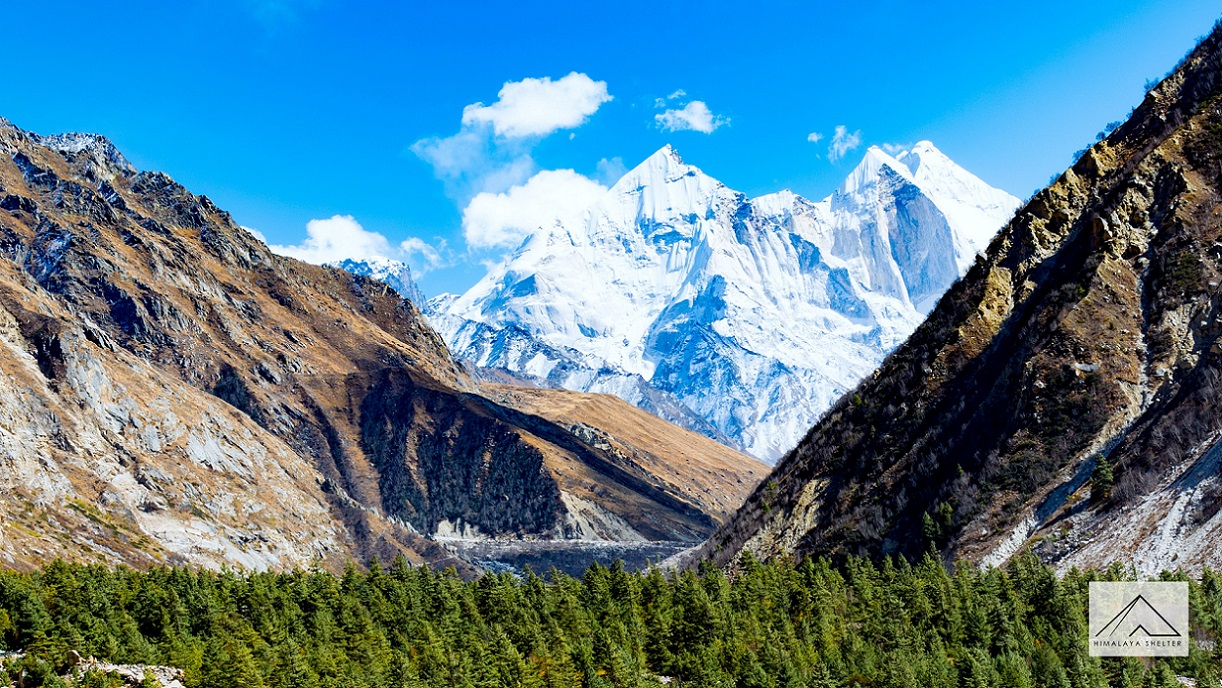Explore Bali Pass Trek: A Himalayan adventure for your bucket list.
The history and significance of the Bali Pass Trek:
Locals have been moving cattle and supplies between the villages of the Tons and Yamuna valleys for millennia by using the ancient Bali Pass Trail in the Indian Himalayas. The walk travels through the distant settlements of Sankri, Taluka, and Osla as well as the Govind National Park and Sanctuary, a protected region renowned for its variety of flora and animals.
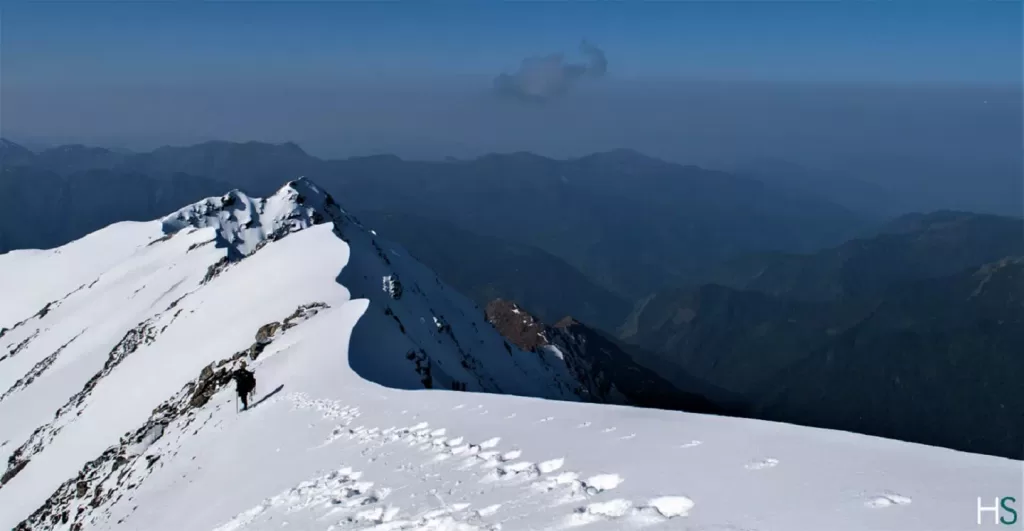
The Bali Pass, a high-altitude mountain pass at an elevation of 4,900 meters (16,077 feet) above sea level, is where the journey gets its name. The pass, which is the trek’s highest point, provides beautiful views of the Himalayan peaks in the area, including Swargarohini, Banderpooch, and Kalanag.
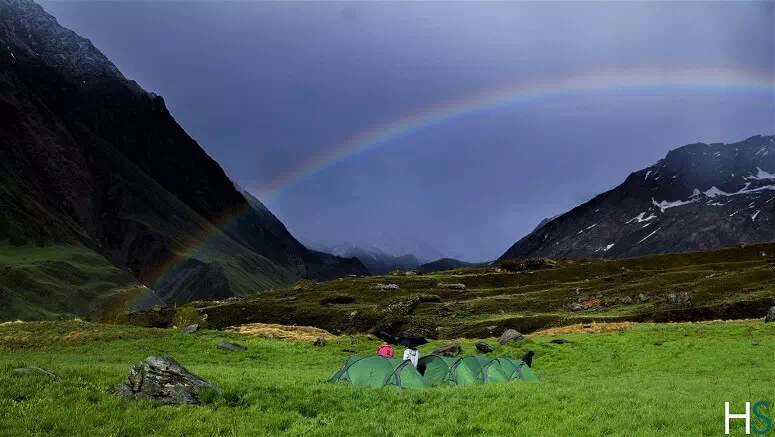
The Bali Pass Trek has long been a historic trading route, but only recently has it become well-known among trekkers and adventure seekers. Trekkers from all over the world travel to this isolated Himalayan journey today to experience its beauty and difficulty.
The value of the Bali Pass Trek is found in its contribution to the local economy as well as its natural splendour and cultural heritage. The walk helps the growth of sustainable tourism in the area by giving local guides, porters, and guesthouse owners work possibilities.
Bali Pass Trek is very important for protecting the ecosystem. The Govind National Park and Sanctuary, where the snow leopard, Himalayan black bear, and musk deer are among other endangered plant and animal species, is where the walk goes through. The walk promotes responsible tourism and increases understanding of the value of protecting these vulnerable habitats for coming generations.
Trekkers who take on the Bali Pass Trek not only get to live their wildest dreams but also help to protect the Himalayan ecosystem and advance eco-friendly travel in the area.
Trekking routes and itinerary:
There are two well-known routes for the Bali Pass Trek that hikers can select from: the Sankri-Taluka-Osla-Seema both the Har ki Dun-Taluka-Osla-Har ki Dun-Ruinsara Tal-Ruinsara Lake-Bali Pass-Ruinsara Tal-Bhimtal-Raksham trip and the Kuari Pass-Khullara-Kuari Pass Base Camp-Bali Pass-Bhagiya Thach-Bhimtal-Raksham trek.
The initial route is around 68 kilometres long and is completed in 8–9 days. The walk leaves from Sankri and travels via charming towns like Taluka, Osla, and Seema where hikers may get a taste of the native way of life. The journey continues towards the Kuari Pass and the Khullara Meadows, which provide sweeping vistas of the Himalayan ranges in the area.
The next destinations on the trek are Bali Pass and Bhagiya Thach, both of which are renowned for their beautiful campsites and alpine woods. Raksham, a picturesque village in Himachal Pradesh’s Kinnaur region, is where the walk finally comes to a finish.
The second path is longer and takes 12–13 days to finish; it covers a distance of around 102 kilometres. It begins in the well-known trekking location of Har ki Dun and continues via Taluka, Osla, and Har ki Dun once more, giving trekkers the chance to return to this picturesque valley. The Ruinsara Tal and Ruinsara Lake, which are renowned for their crystal-clear waters and breathtaking vistas of the nearby mountains, are the next destinations on the walk. In Raksham, where the trip concludes, hikers may unwind and take in the natural beauty of the Kinnaur area.
Both routes feature steep ascents, river crossings, and high elevations; thus, they both call for a high degree of fitness and preparedness. Trekkers are recommended to have the necessary equipment, such as a reliable backpack, warm clothes, and strong hiking shoes. To avoid altitude sickness and other health problems, they should also keep hydrated and get enough sleep while on the hike. Bali Pass Trek is a great option if you’re seeking an experience that combines beautiful scenery, native culture, and strenuous physical activity. This journey is likely to leave you with priceless memories and a renewed respect for the Himalayas’ natural beauty thanks to its two picturesque routes and varied terrain.
Preparing for the Bali Pass Trek:
It is essential to be ready for the Bali Pass Trek to guarantee a successful and secure journey across the stunning mountains. The following advice will assist you in preparing for the trek:
- Increase your level of fitness:
The Bali Pass Trek is a strenuous route that calls for a high degree of physical condition. Start your workout regimen at least a few months beforehand, concentrating on aerobic, strength, and endurance activities. To replicate the geography and altitude, incorporate hiking and stair climbing into your workout programme. - Get used to the altitude:
The Bali Pass Trek’s highest point rises to a height of 4,950 metres. It is advised to acclimatise your body before the hike to reduce your risk of getting altitude sickness. To acclimatise to the altitude, spend a few days in surrounding towns or cities like Joshimath or Auli. - Don’t forget the gear:
For comfort and safety, proper trekking equipment is crucial. Get high-quality hiking boots, waterproof, warm clothes, a reliable backpack, and a sleeping bag. Don’t forget to include a headlamp, a first aid kit, and a water bottle. - Stay hydrated:
Maintaining proper water and nourishment is important when climbing at high elevations. Carry a filter device or water purification pills to verify that the water is safe to drink. Bring simple-to-transport and cook meals and snacks that are high in energy. - Join a group or hire a guide:
Although the Bali Pass Trek can be difficult and remote, it is advised to hire a guide or travel in a group. The culture, history, and natural beauties of the area may be learned a great deal from local guides. Joining a group trip may also give you a sense of safety and togetherness. - Plan your itinerary and permits:
Bali Pass Trek needs to acquire licences and authorization from the local authorities, so plan your schedule and permits. It is crucial to schedule your travels and acquire the required permissions in advance. To guarantee responsible and safe travel, be careful to abide by the local laws and ordinances.
By following these tips and guidelines, you can prepare yourself for a challenging but rewarding adventure on the Bali Pass Trek.
Accommodation and food:
When undertaking the Bali Pass Trek, it’s important to consider the accommodation and food options available on the trail. With an altitude of 4,925 meters, trekkers need to ensure that they are well-fed and rested to conquer the steep terrain and harsh weather conditions. Here’s a guide to the accommodation and food options that you can expect during the trek:
Accommodation:
The Bali Pass Trek offers few alternatives for lodging, with the majority of trekkers choosing tented campsites or homestays in the local settlements. Yet, there are a few modest rest stops along the path that provides shared rooms and dormitory-style lodging. The Ruinsara Forest Rest House, the Seema and Har-ki-Dun Rest Houses, and the Yamunotri Temple Guesthouse are a few well-liked choices. If you intend to go trekking during the busy season, it is advised that you make reservations for lodging in advance.
Food:
Although there are few food alternatives available along the path, the majority of trekkers bring their food supplies and cooking equipment. Nonetheless, you may get staple foods like roti, dal, and rice from a few tea booths and dhabas (small cafes). A few of the well-liked foods to attempt to include Maggi noodles, aloo paratha, and regional desserts. It’s crucial to remember that as you ascend, the altitude and temperature make it more challenging to carry and cook food supplies. To keep yourself nourished throughout the day, it is advised to pack high-energy foods such as nuts, dried fruits, and energy bars.
Costs for the Bali Pass Trek:
The Bali Pass Trek is a popular trekking route in the Garhwal Himalayas of Uttarakhand, India. The cost of the Bali Pass trek can vary depending on several factors, including the trekking agency or operator, the duration of the trek, the group size, the level of services provided, and the season.
As a rough estimate, the cost of the Bali Pass trek can range from around INR 25,000 to INR 50,000 (approximately USD 340 to USD 680) per person for a 7-10 day trek. This usually includes the cost of food, accommodation, guide, porter, transportation, permits, and other necessary expenses.
It is recommended to do some research and compare the prices of different trekking agencies to get a better idea of the cost of the Bali Pass trek. It is also important to ensure that the trekking agency is reliable and provides good services, as this can greatly affect the overall experience of the trek.
Natural wonders and scenic beauty:
A trekker’s heaven, the Bali Pass Trek in the Himalayas features some of India’s most beautiful natural scenery and breathtaking views. For those who love the outdoors, the trip through the Govind Wildlife Sanctuary, which is home to various rare and endangered plant and animal species, will be an even more unforgettable experience. Trekkers will see a variety of sceneries as they travel the path, from lush green meadows to snow-capped summits, and from rocky terrain to deep woods.
The captivating Ruinsara Lake, which is situated at a height of 3,600 metres above sea level, is one of the most breathtaking natural beauties that hikers may see on the trip. Trekkers may stop for a rest and take in the grandeur of the Himalayas amid the lake’s tranquil surroundings and crystal-clear waters.
Along the walk, in addition to the lake, hikers may see several stunning waterfalls, such as the Kala Nag Waterfall and the Phulara Ridge Waterfall. The rushing waterfalls, encircled by thick vegetation, offer a welcome break from the strenuous terrain and give hikers plenty of chances to take beautiful pictures.
As hikers progress higher, they will also see the stunning Himalayan flora, which includes a variety of junipers, rhododendrons, and wildflower species. In addition to a variety of other animals, the forests along the path are home to Himalayan black bears, snow leopards, and musk deer.
Overall, the Bali Pass Trek in the Himalayas offers hikers a fantastic chance to see some of India’s most stunning natural treasures. The hike is a once-in-a-lifetime opportunity that no nature lover or adventure seeker should pass up because of its breathtaking vistas, waterfalls, and woods.
Local culture and traditions:
The Bali Pass Trek in the Himalayas is known for its magnificent natural beauty as well as its extensive cultural legacy. The nearby towns and villages provide a window into a way of life that has mostly not altered for generations. The chance to become fully immersed in the traditions and rituals of the locals is one of the trek’s highlights.
Trekkers have the opportunity to stop at various traditional villages along the way, where they may see how the people go about their everyday lives, including farming, weaving, and cooking. Ancient temples and monasteries may be found in many settlements, providing a glimpse into the local spiritual traditions. Trekkers get the opportunity to see customary rites and ceremonies, such as praying to mountain gods for a safe journey.
The food is one of the most intriguing facets of the community. The area is renowned for its substantial and delectable cuisine, which is frequently prepared to utilise items that may be found nearby. Trekkers may try regional delicacies like momos in addition to typical fares like dal, roti, and sabzi. A wonderful approach to engaging with the community and discovering more about the history of the area is to spend a meal with a local family.
Ultimately, the Bali Pass Trek provides a chance to experience a physical challenge while also learning about and appreciating the rich cultural legacy of the area. Trekkers will learn more about the locals and their way of life if they spend time exploring the nearby villages and towns.
Health and safety on the trail:
Trekkers on the legendary Bali Pass Trek pass through some of the Indian Himalayas’ most stunning scenery. Trekkers must be aware of potential risks and hazards to be safe and healthy on the trail along with the breathtaking landscape. We’ll go over some crucial advice and suggestions for being safe and healthy while participating in Bali Pass Trek in this post.
One of the most frequent dangers of high-altitude hiking in the Himalayas is altitude sickness, and Bali Pass Trek is no exception. The warning signs and symptoms of altitude sickness, which might include headaches, nausea, dizziness, and shortness of breath, should be recognised by trekkers. To prevent altitude sickness, it’s critical to properly acclimatise and raise your altitude over time.
The trail’s actual terrain is another danger. The walk may be physically demanding because of its rocky routes, steep ascents and descents, and small footpaths. To prevent injuries, hikers must be emotionally and physically prepared for the endeavour. They also need to wear the proper gear.
Trekkers should be prepared for rapid changes in temperature and weather because it may be unpredictable in the Himalayas. Carrying enough warm clothing, rain gear, and other necessities like sunscreen and bug repellent is vital.
Trekking also carries the danger of infections caused by contaminated water and food. The best practice for hikers is to always bring their water bottles and fill them up from reputable sources. To avoid food illness, it’s crucial to stick to prepared foods and stay away from raw or undercooked foods.
Finally, it’s always recommended to trek with a reliable guide or a group to ensure safety on the trail. Experienced guides can provide valuable insights into the terrain, culture, and wildlife, and help trekkers navigate the challenges of the trail.
Best time for this trek:
Summer and fall are the ideal seasons to do the Bali Pass Trek in the Himalayas. The hike is normally available from May through October, with June to September being the busiest months. Clear sky and comfortable daytime temperatures characterise the weather at this time, which is rather consistent.
The Himalayan weather may, however, be unexpected, so it’s always a good idea to be ready for rapid changes in temperature and weather conditions. The rainy season, which normally lasts from July to September, can make the track slick and difficult to travel.
So, the best times to complete the Bali Pass Trek are in the summer and fall. Trekkers may see the breathtaking natural splendour of the Himalayas during this period, including the luxuriant green woods, meadows brimming with wildflowers, and distant snow-capped summits. With daytime temperatures between 15-20 degrees Celsius, the climate at this time is also suitable for hiking.
Hence, for the optimum experience, plan your Himalayan trekking vacation to include the Bali Pass Trek between May and October. In case of unforeseen weather changes, don’t forget to take suitable clothes, such as warm clothing, supportive shoes, and rain gear.
How difficult is this trek?
Bali Pass Trek is considered a challenging trek that requires a good level of fitness and endurance. The trail takes trekkers through steep ascents and descents, narrow ridges, and rocky terrains, making it a strenuous trek. The trek reaches an altitude of about 16,200 feet above sea level, making it even more demanding due to the thin air and high altitude sickness risks.
However, despite the difficulty, the trek is worth the effort as it offers trekkers a chance to explore the majestic Himalayan landscapes, including lush meadows, snow-capped peaks, and sparkling streams. It is recommended that trekkers undergo proper training and conditioning before undertaking the trek to ensure that they can handle the physical demands of the trail. To complete Bali Pass Trek, trekkers must be prepared for the challenges and take precautions to minimize risks.
Conclusion:
In conclusion, Bali Pass Trek is a challenging yet rewarding adventure that offers trekkers a chance to explore the stunning Himalayan landscapes, witness unique wildlife and bird species, and immerse themselves in the rich local culture and traditions. To ensure a successful and safe trek, it is important to prepare well by undergoing proper fitness training, acclimatizing to the high altitude, and carrying the right trekking gear.
The best time to undertake Bali Pass Trek is during the summer months between May and June or September and October, when the weather is relatively mild and the skies are clear, providing breathtaking views of the surrounding mountains. The trek is offered as part of several packages that include accommodation, meals, and guide services, making it accessible to trekkers of all levels.
The trek reaches a height of 16,200 feet above sea level, making it a challenging trek that requires careful preparation and planning. The altitude and temperature can pose significant risks, including altitude sickness, making it important for trekkers to monitor their health and take necessary precautions.
To navigate the trek effectively, trekkers should refer to the Bali Pass Trek route map, which outlines the various routes and landmarks along the way. Overall, Bali Pass Trek is a unique and unforgettable experience that is sure to leave trekkers with a sense of accomplishment and awe-inspiring memories of the majestic Himalayan landscapes.
Uttarakhand Treks | treks in Uttarakhand | Treks from Dehradun | trekking in Dehradun | Trekking companies in Dehradun | Har Ki Dun trek | Bali Pass trek | Phulara Ridge Trek | Kedarkantha Trek| Dayara Bugyal trek | Gaumukh Tapovan trek | Kashmir Great Lakes trek | Valley of Flowers trek | Nag Tibba Trek
